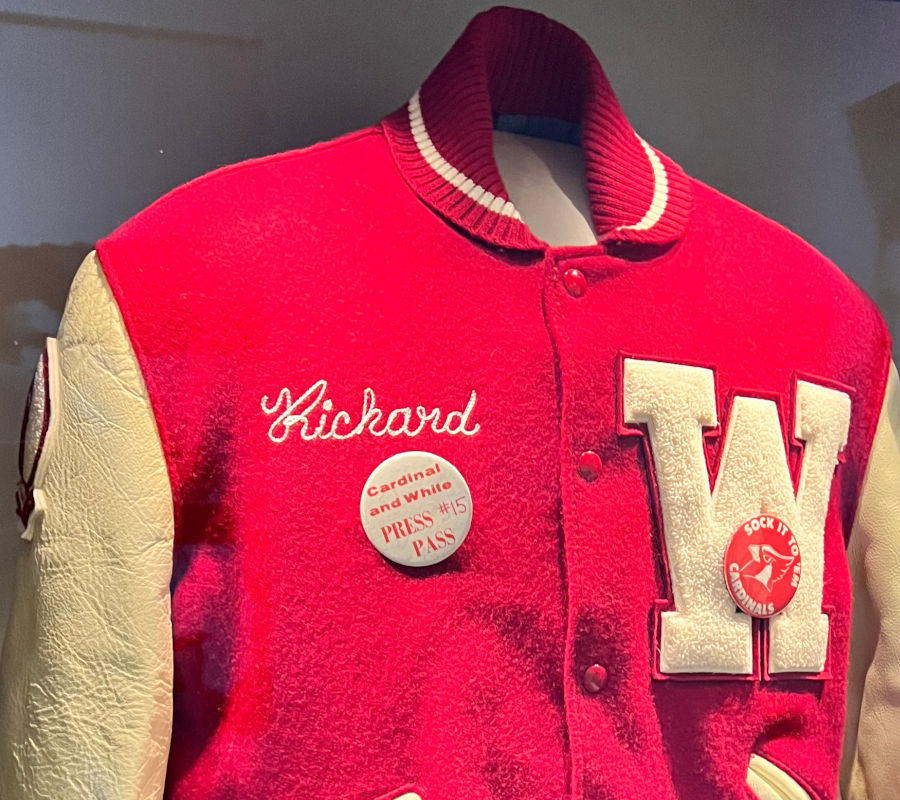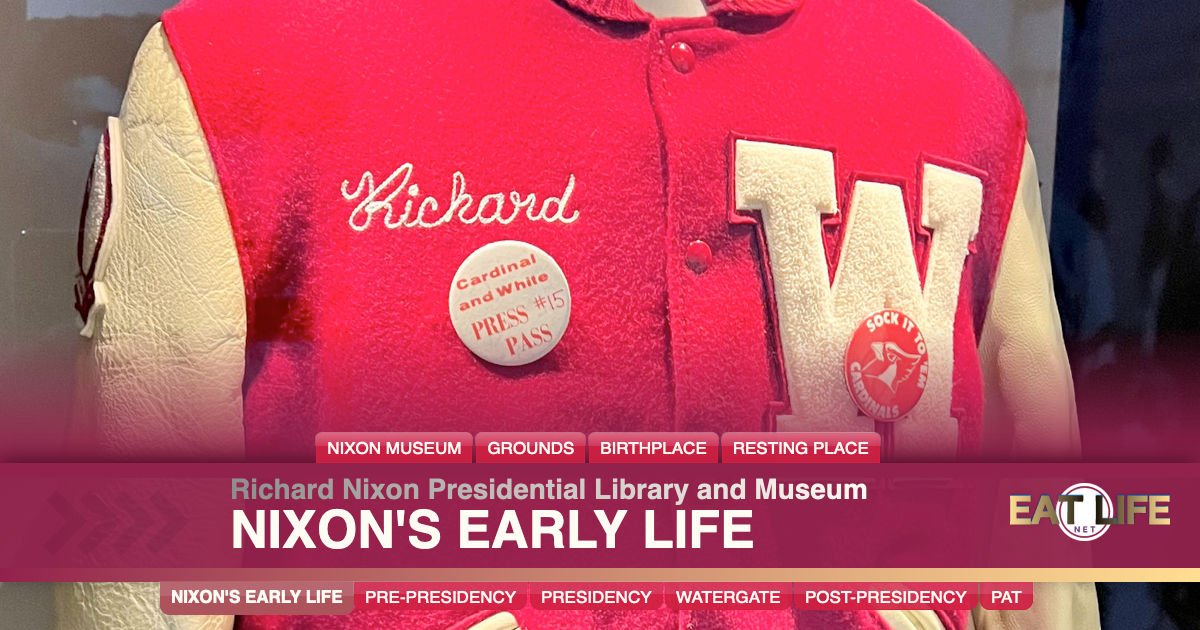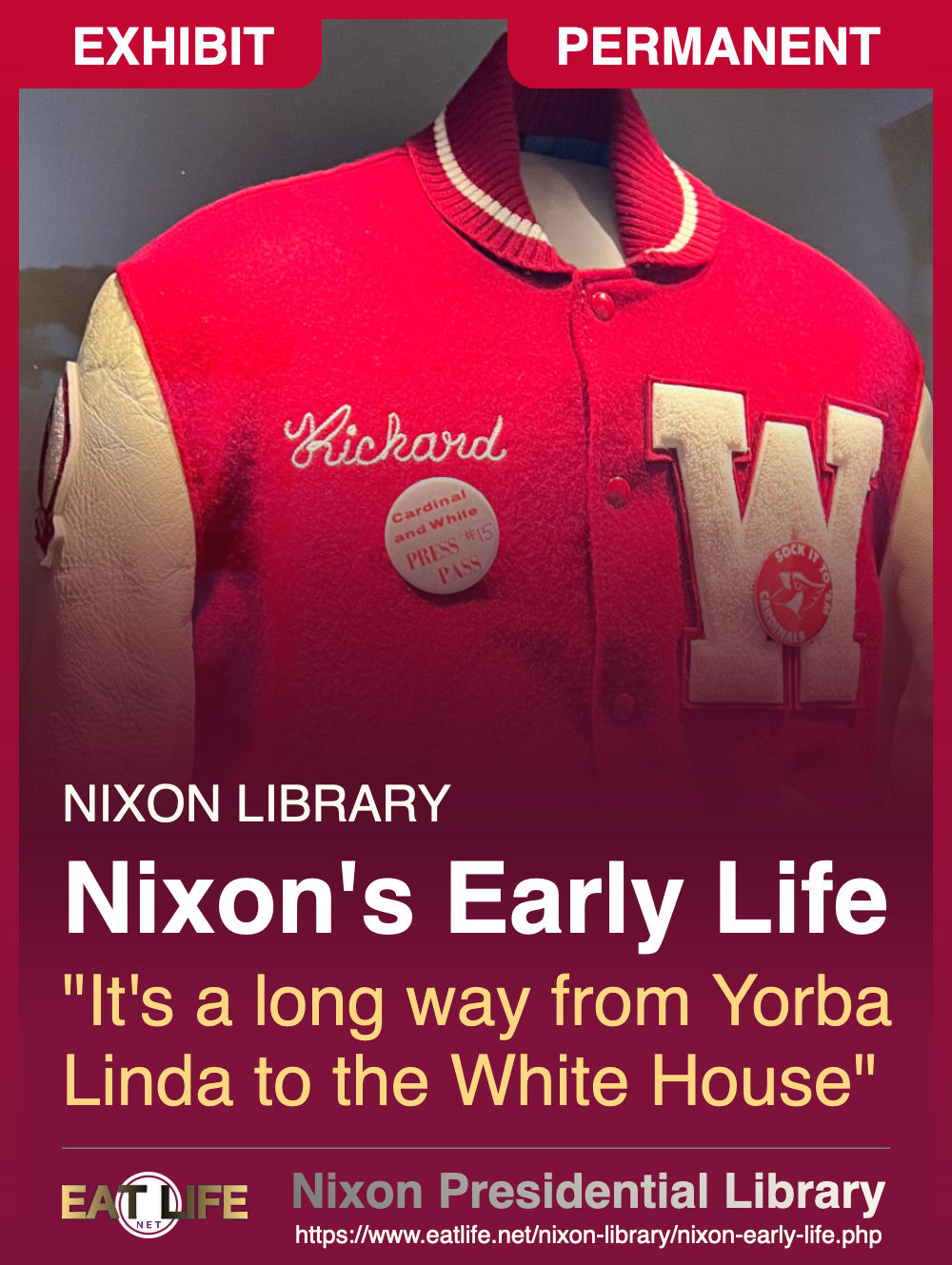From serious child to accomplished student to loving husband, Navy veteran, and public servant, Nixon grew into a complex and multi-faceted man, and these early experiences helped to shape the legacy he would leave behind. Family and teachers, triumphs and tragedies - each encounter left its mark on Nixon's mind and heart.
It's a long way from Yorba Linda to the White House. - July 19, 1990
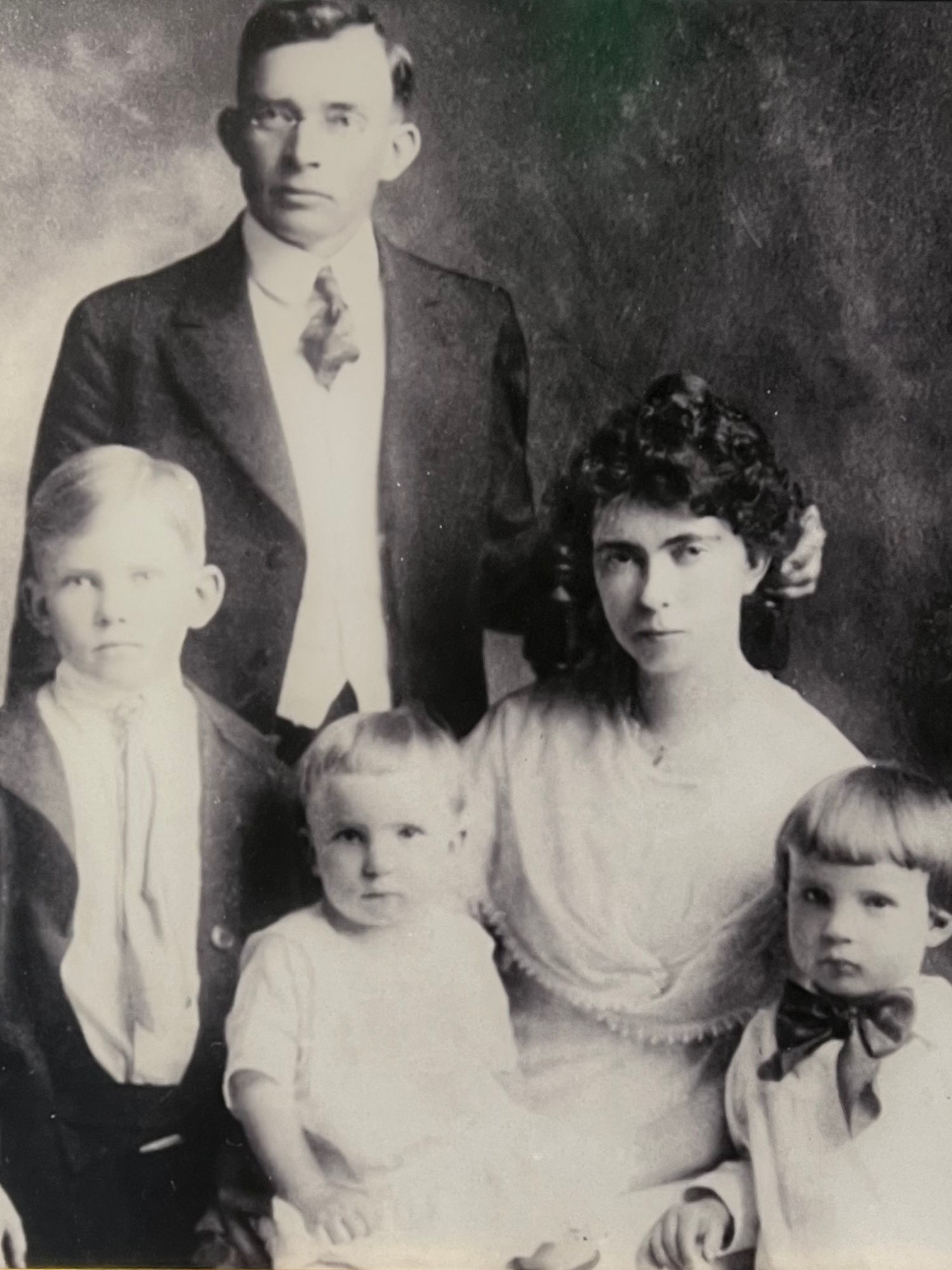
- Frank and Hannah, and the first three of their five sons: Harold and Richard, named for English kings, and Francis Donald, named after his father.
- Arthur (1918) and Edward (1930) were born after this photograph was taken.
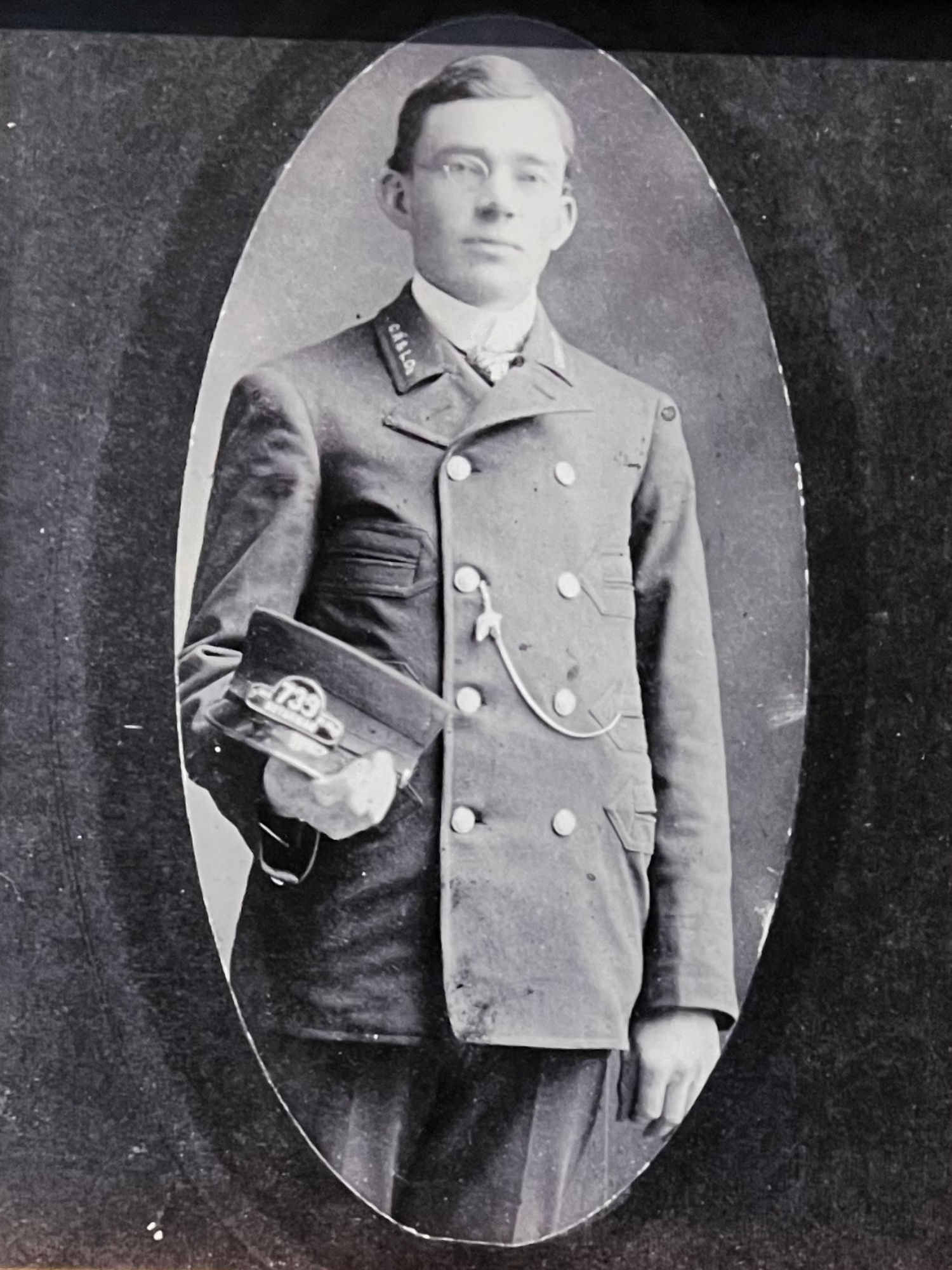
Frank Nixon, whose formal education didn't get much beyond the third grade, was known for his hard work and his love of a good argument.
- "He was argumentative. He was combative. He was competitive. He was a character." - Richard Nixon
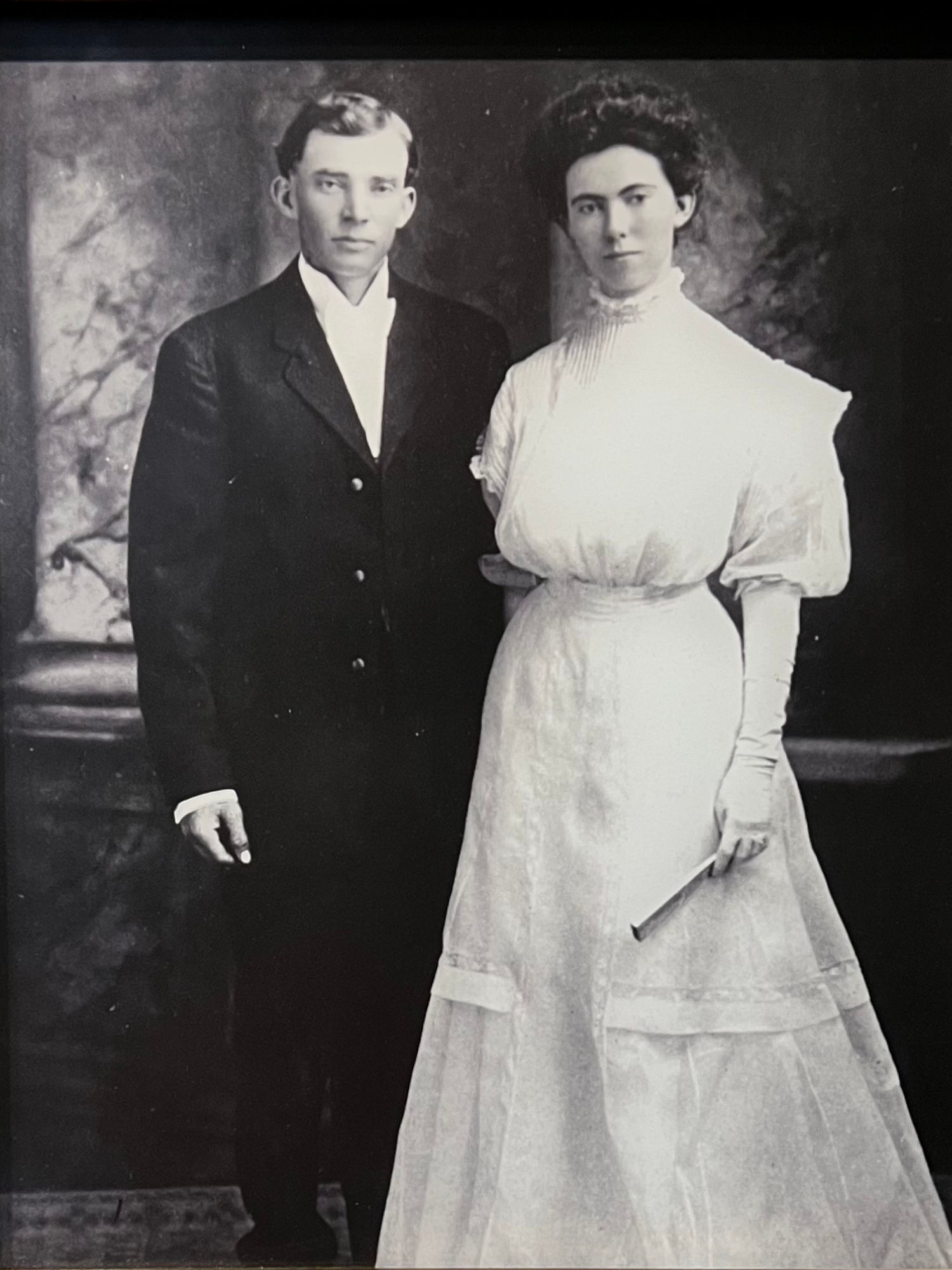
- "The principle that opposites attract aptly describes my father and my mother ... They were completely devoted to each other, and no sacrifice was too great to make for their children. But two more temperamentally different people could hardly be imagined." - Richard Nixon
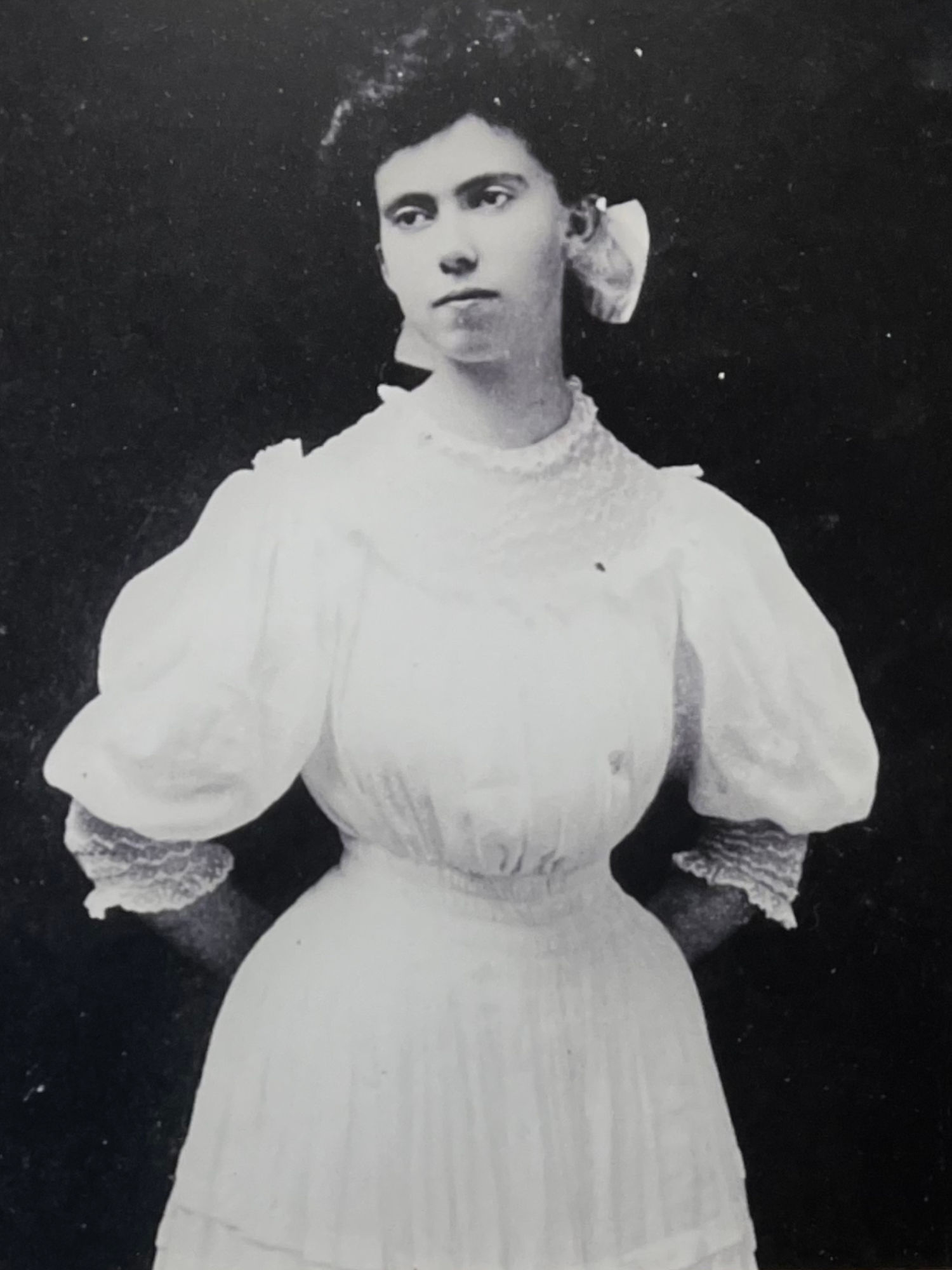
Hannah Milhous, a devout Quaker, set an example of hard work, empathy, and tolerance. She exemplified the Quaker "peace at the center," and her values formed the bedrock of her son's character.
- "Nobody will ever write a book, probably, about my mother ... But she was a saint." - Richard Nixon
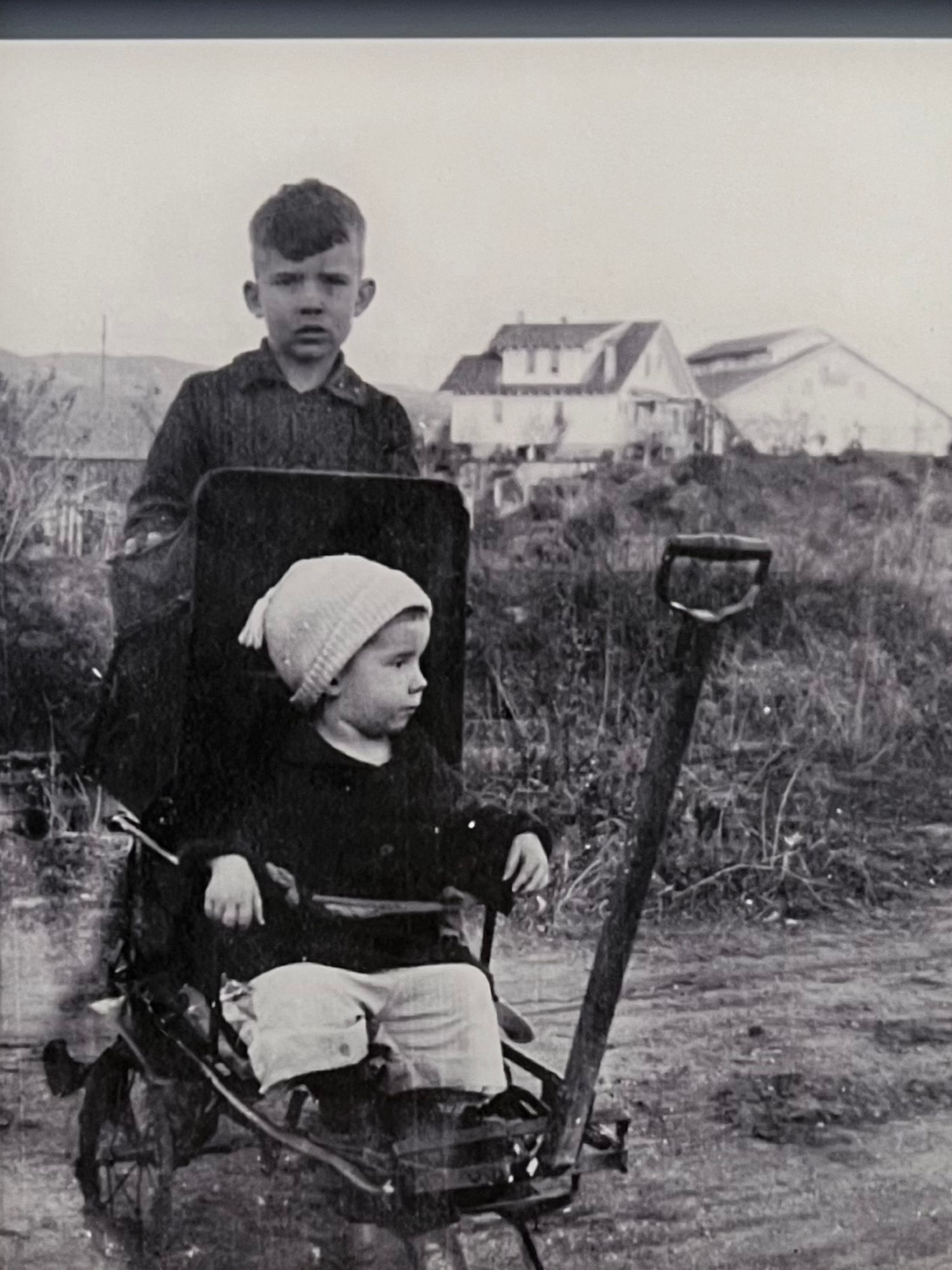
The beloved younger brother of the family. Arthur died at age 7 of tubercular encephalitis. He was especially close to Richard, who was five years older.
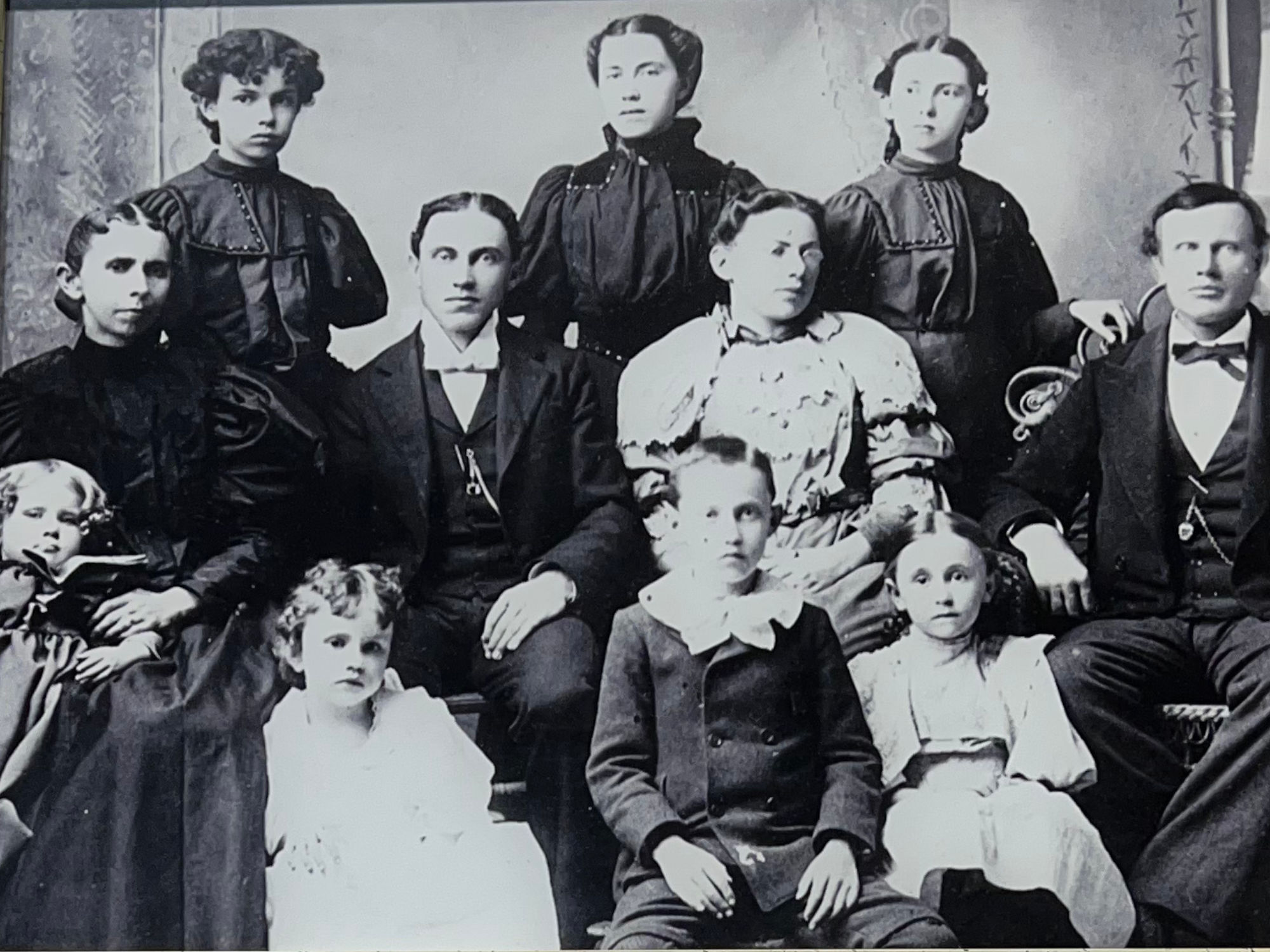
Stalwarts of Whittier, a small Quaker community about 20 miles southeast of Los Angeles, Nixon's grandparents Franklin and Almira Milhous had a strong influence on their grandson, from helping to support his college education to shaping his ideals.
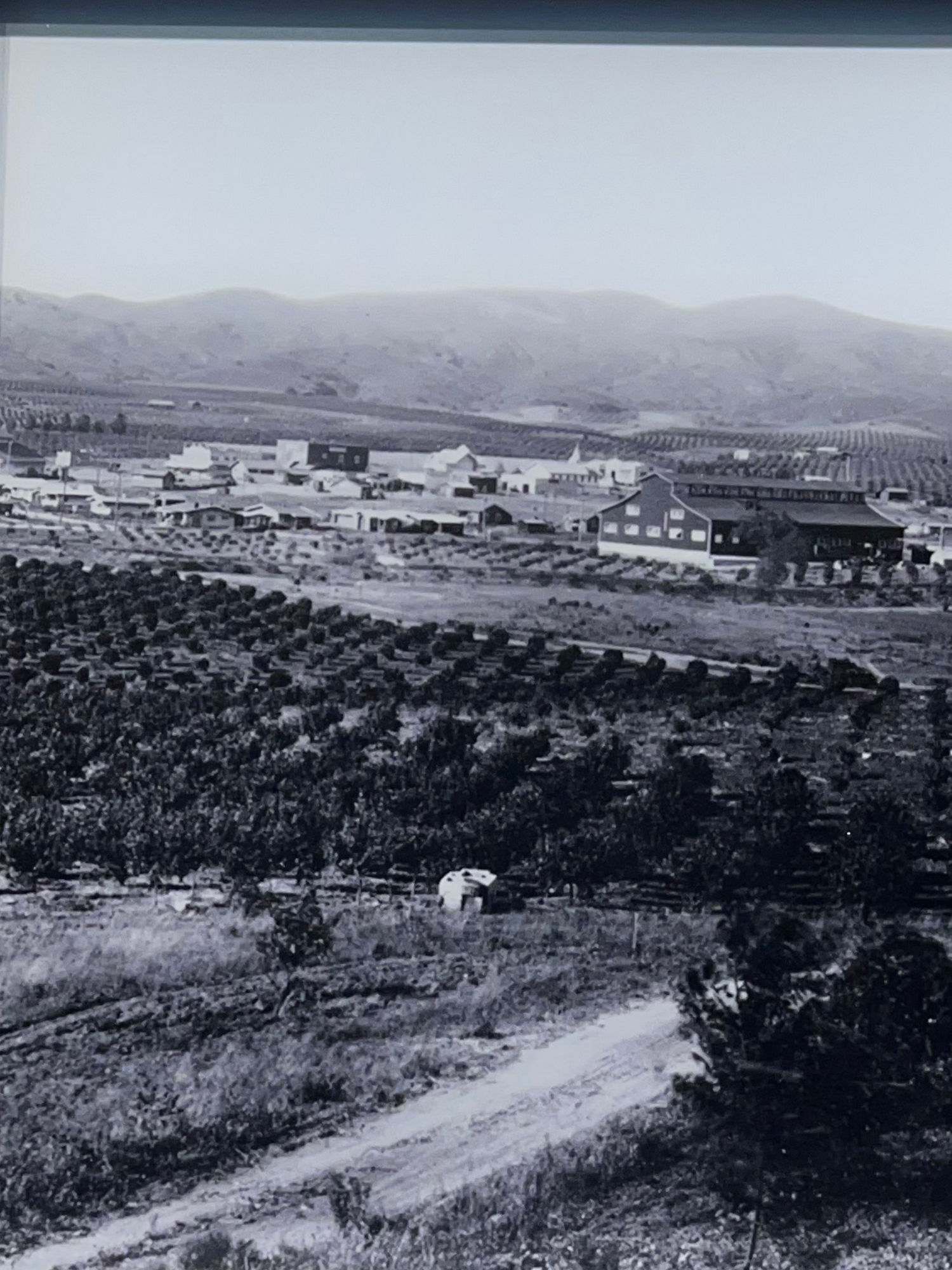
"It wasn't a town. It was turkey mullein, cactus, rattlesnakes, tumbleweeds, and tracks." - Cecil Pickering, a member of one of Yorba Linda's founding families
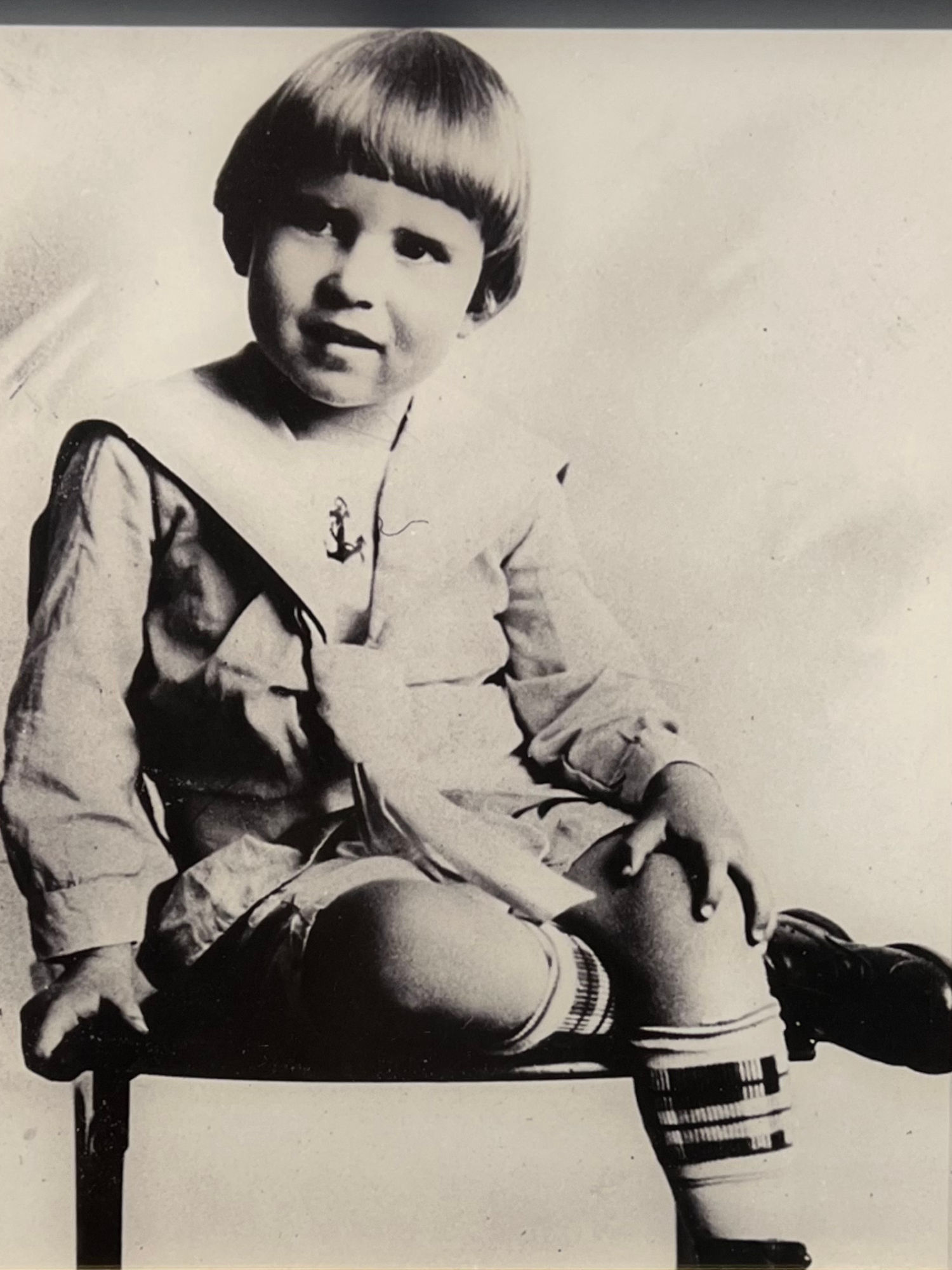
A serious child who loved to read, Richard worked hard in the Nixon store and on his studies. He practiced several musical instruments and became an accomplished pianist.
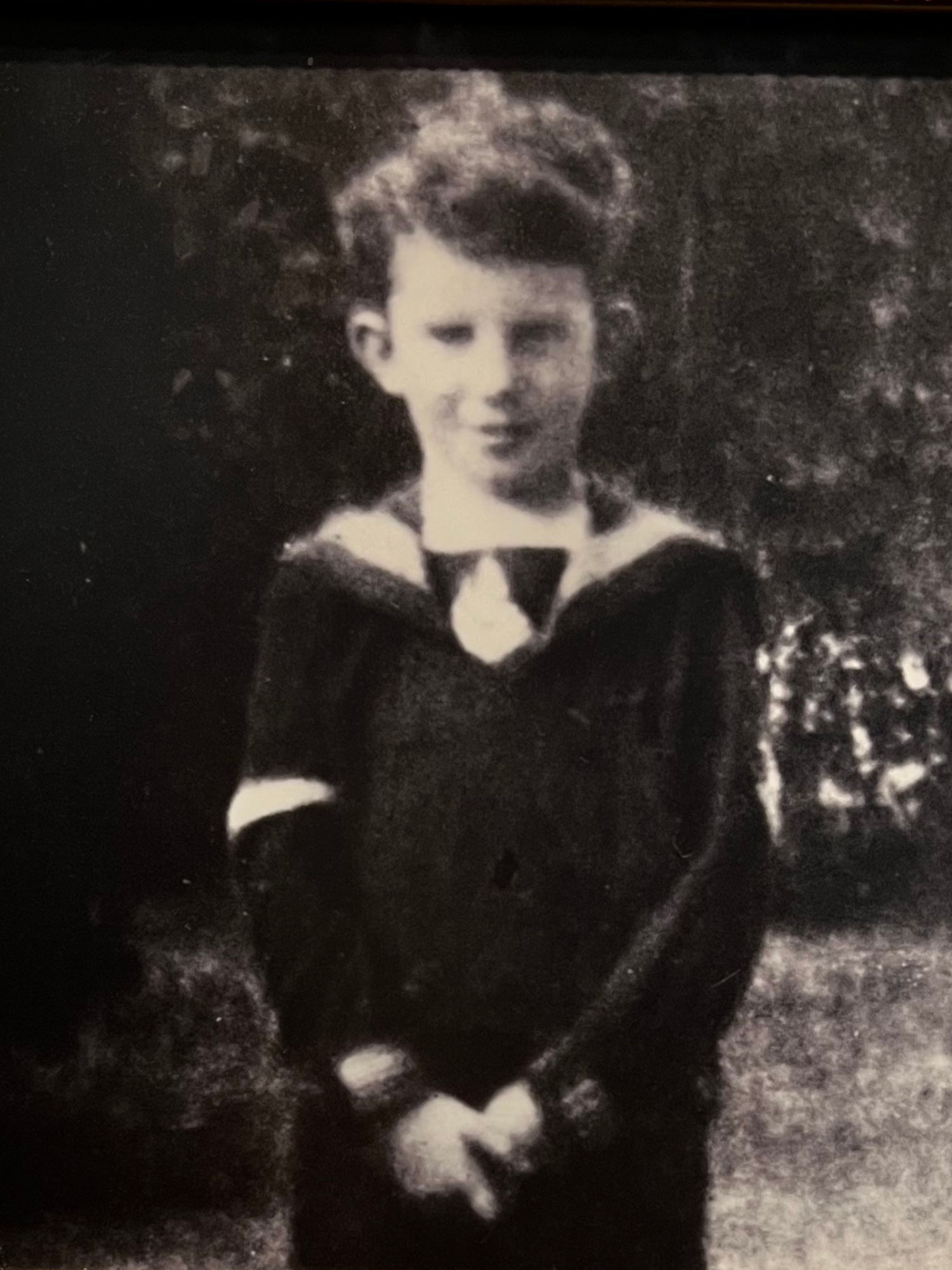
"And so when I am tired and worried, and am almost ready to quit trying to live as I should, I look up and see the picture of a little boy with sparkling eyes, and curly hair." - from "My Brother, Arthur R. Nixon," an essay by Richard Nixon, age 17
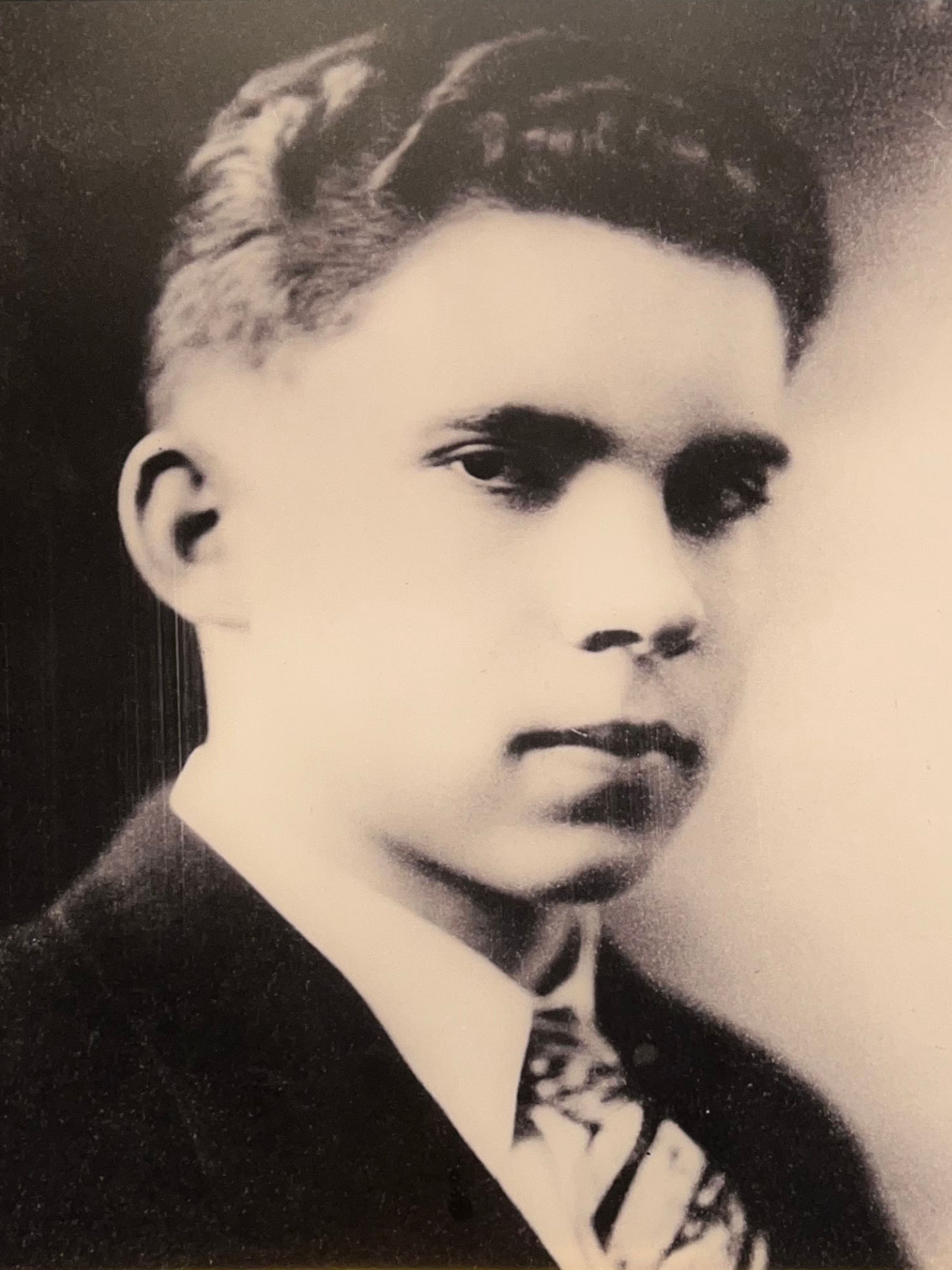
Nixon as a high school senior showed the same intelligence, ambition, doggedness, and competitive streak that would fuel his drive to serve his country.
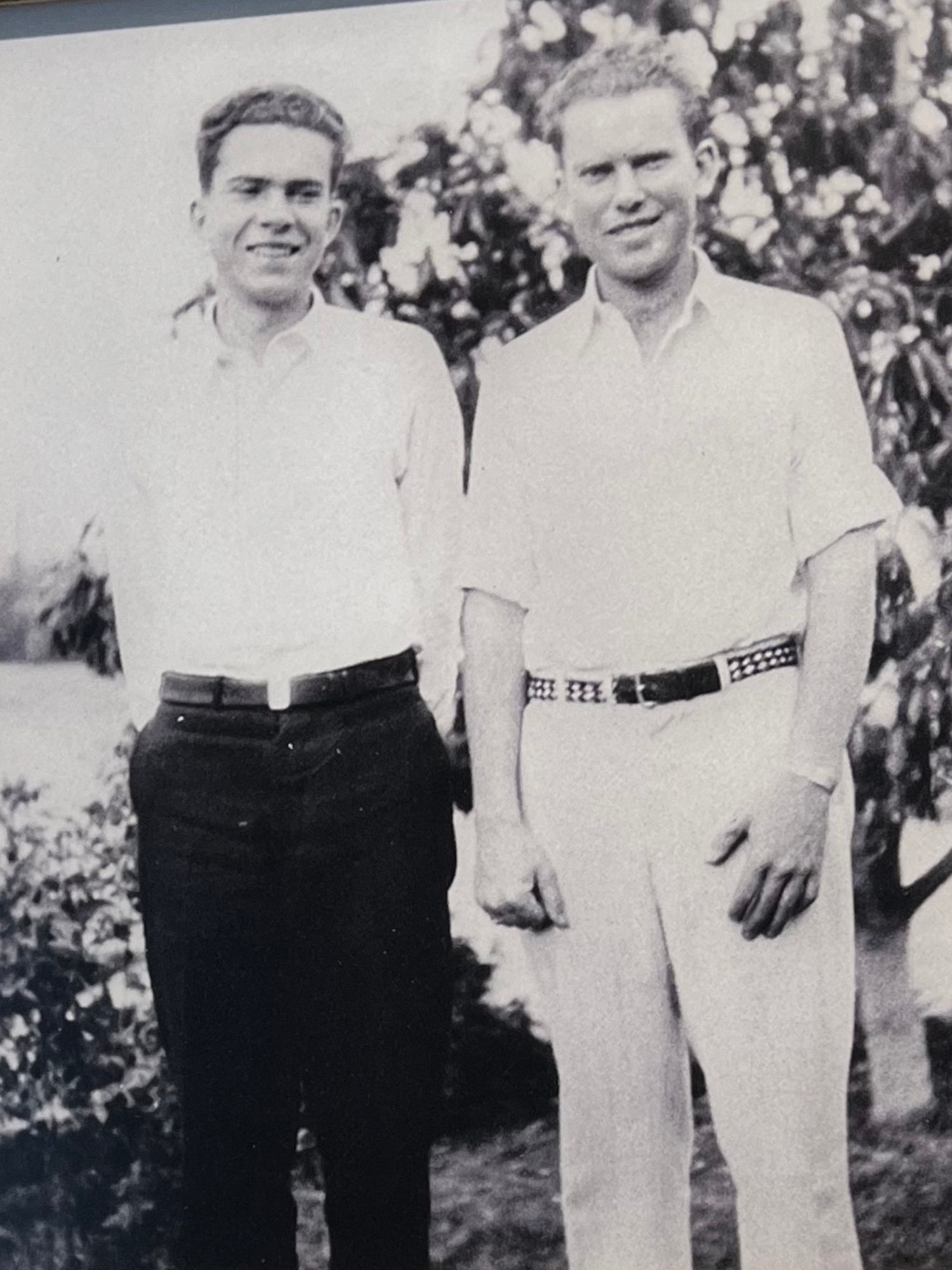
Long stays in the clean desert air of Arizona were not enough to cure Harold, the oldest brother. He died of tuberculosis when Richard was 20. To pay for the travel and renting the house in Prescott, Hannah Nixon cooked and cared for other tuberculosis patients.
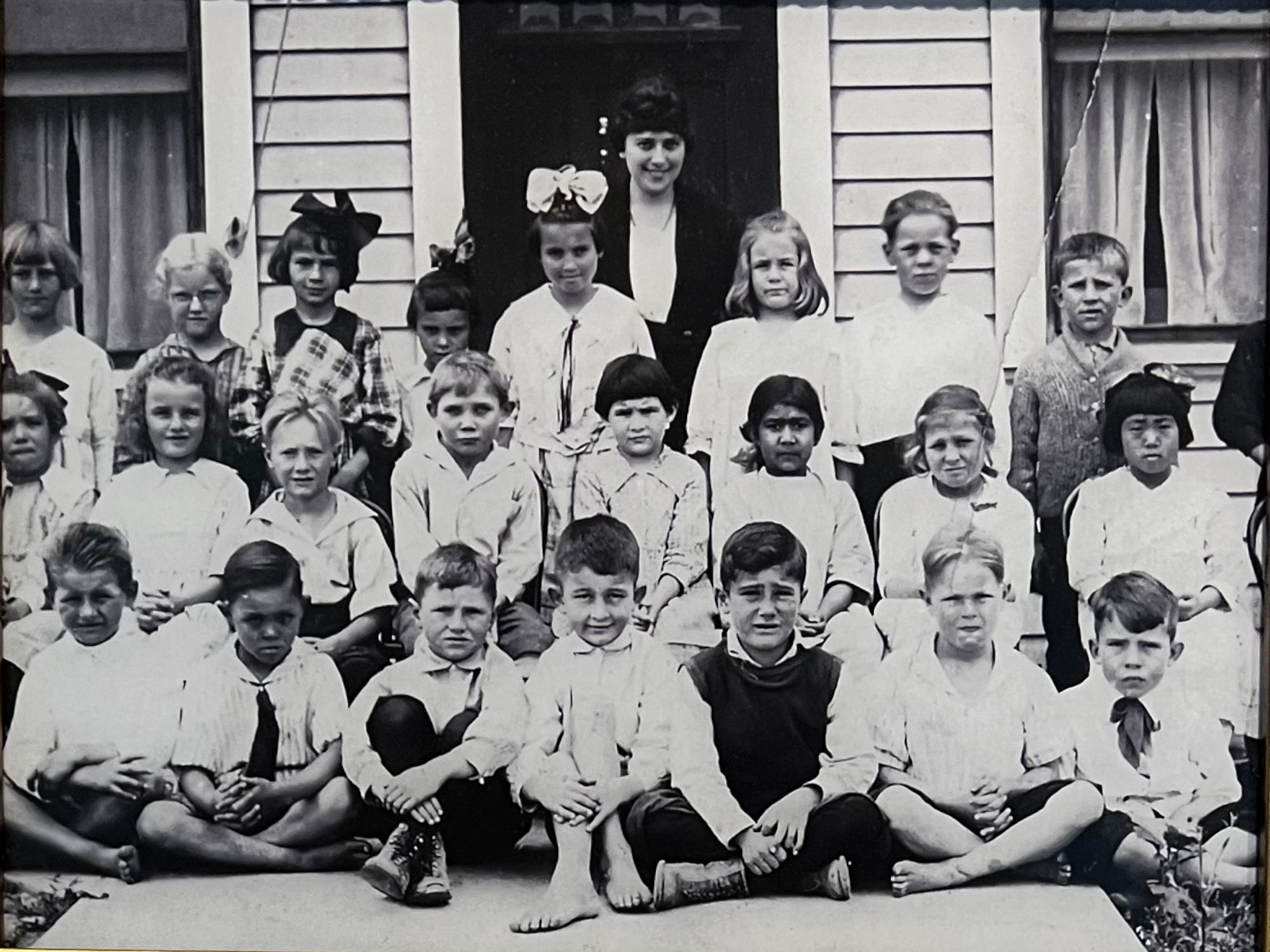
"He always looked like his mother had scrubbed him from head to toe. The funny thing is, I can never remember him ever getting dirty." - Mary Skidmore, Nixon's first grade teacher recalling him in 1977
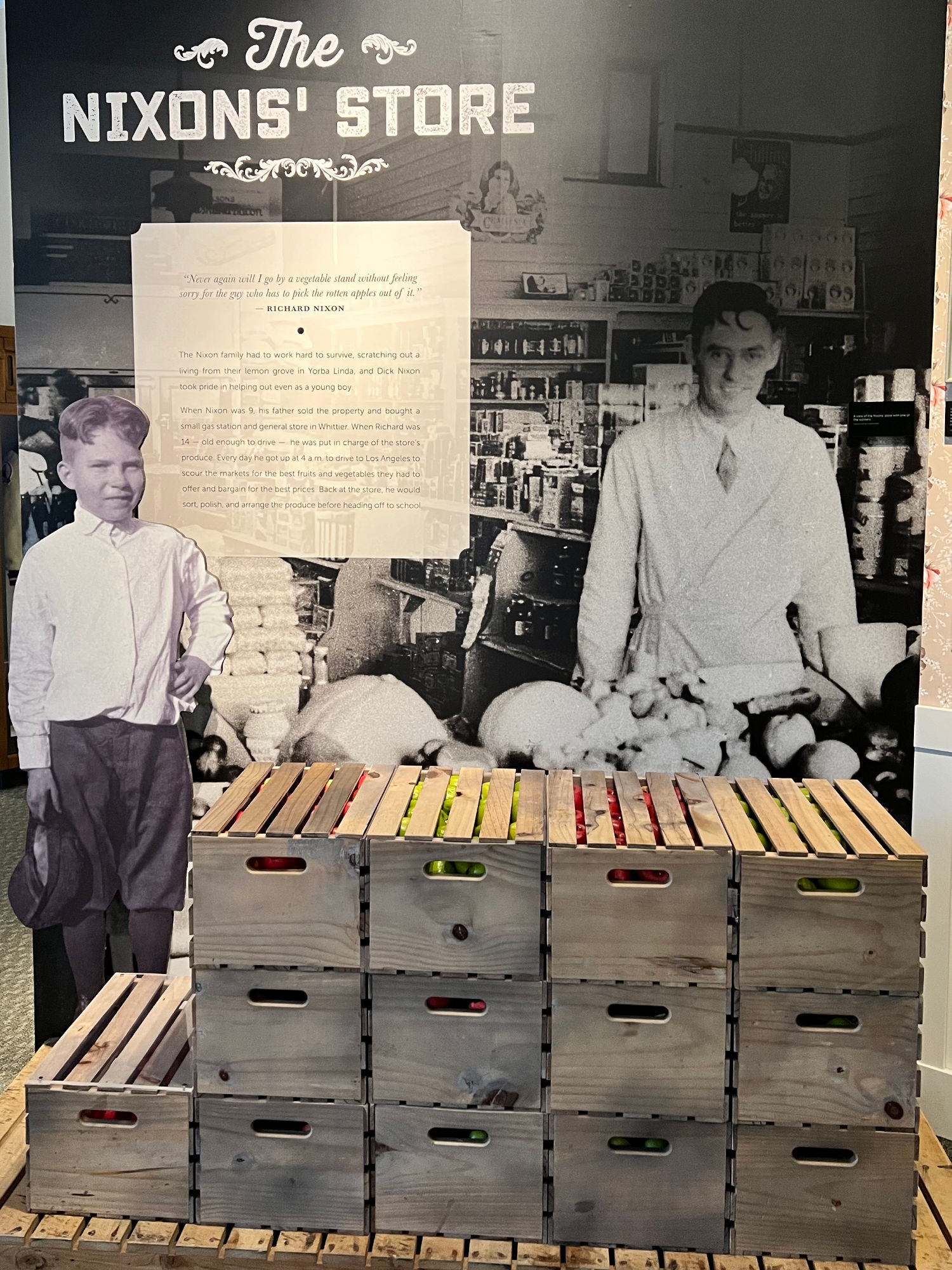
The Nixon family had to work hard to survive, scratching out a living from their lemon grove in Yorba Linda, and Dick Nixon took pride in helping out even as a young boy.
When Nixon was 9, his father sold the property and bought a small gas station and general store in Whittier. When Richard was 14 - old enough to drive - he was put in charge of the store's produce. Every day he got up at 4 a.m. to drive to Los Angeles to scour the markets for the best fruits and vegetables they had to offer and bargain for the best prices. Back at the store, he would sort, polish, and arrange the produce before heading off to school.
An outstanding student with high grades, he was also a determined - if not entirely successful - athlete and worked hard for achievement in debate, student government, and other extracurricular activities.
After several earlier successes, he suffered his first electoral defeat in the race for student body president his senior year in high school. But Dick rallied with a successful run as class president his freshman year in college.
He won a full tuition scholarship to Harvard, but the family couldn't afford the costs of traveling and living in the East. Nixon enrolled instead at nearby Whittier College, which allowed him to live at home and continue working in the family store.
I developed a belief in the individual and his importance, a belief in freedom, but particularly a passion for peace.
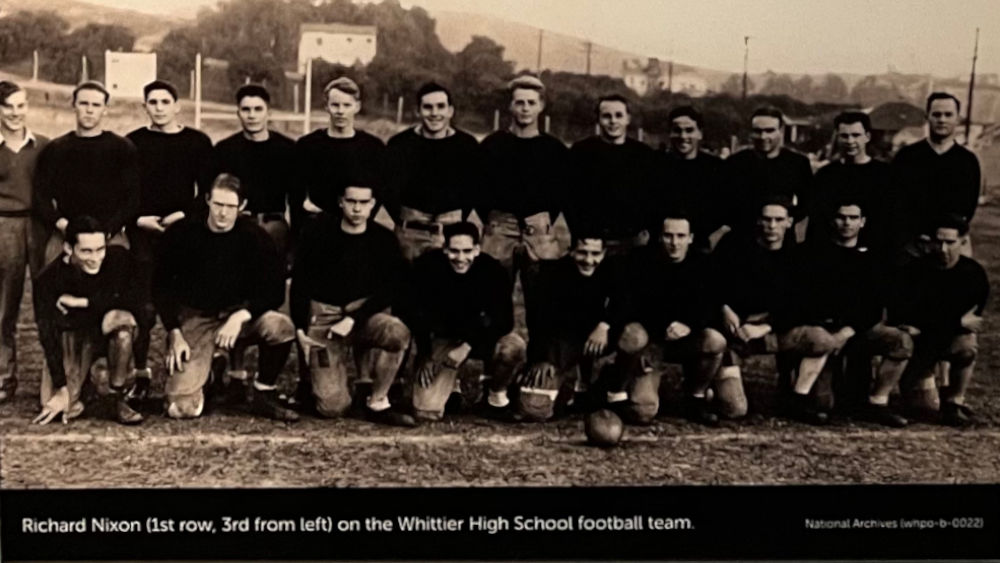
Richard Nixon (1st tow, 3rd from left)
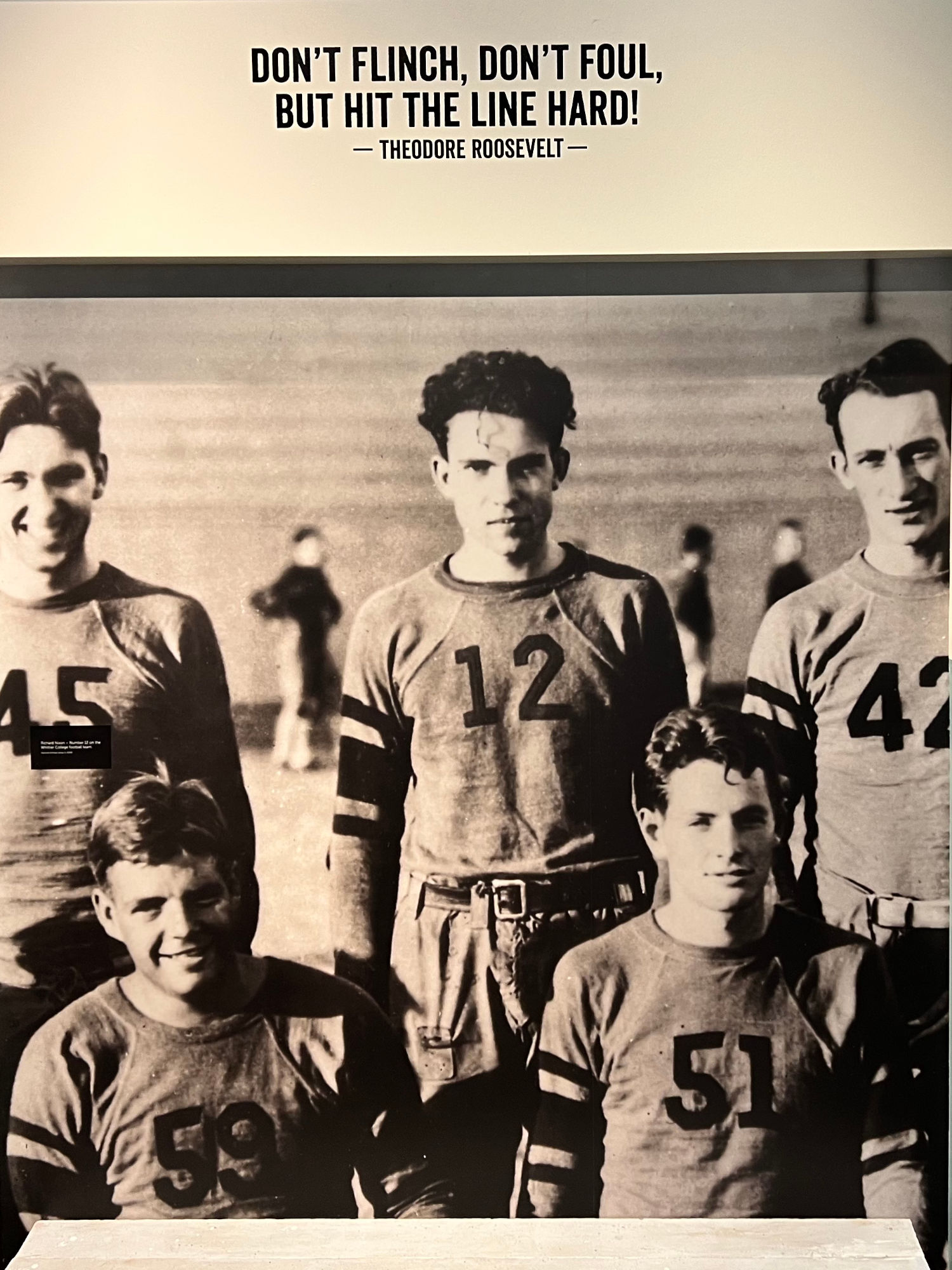
Nixon was rarely sent in to play, but he always showed up. He spent many a game on the bench as a member of the Whittier High football team.
- "Don't Flinch, Don't Foul, But Hit the Line Hard!" - Theodore Roosevelt
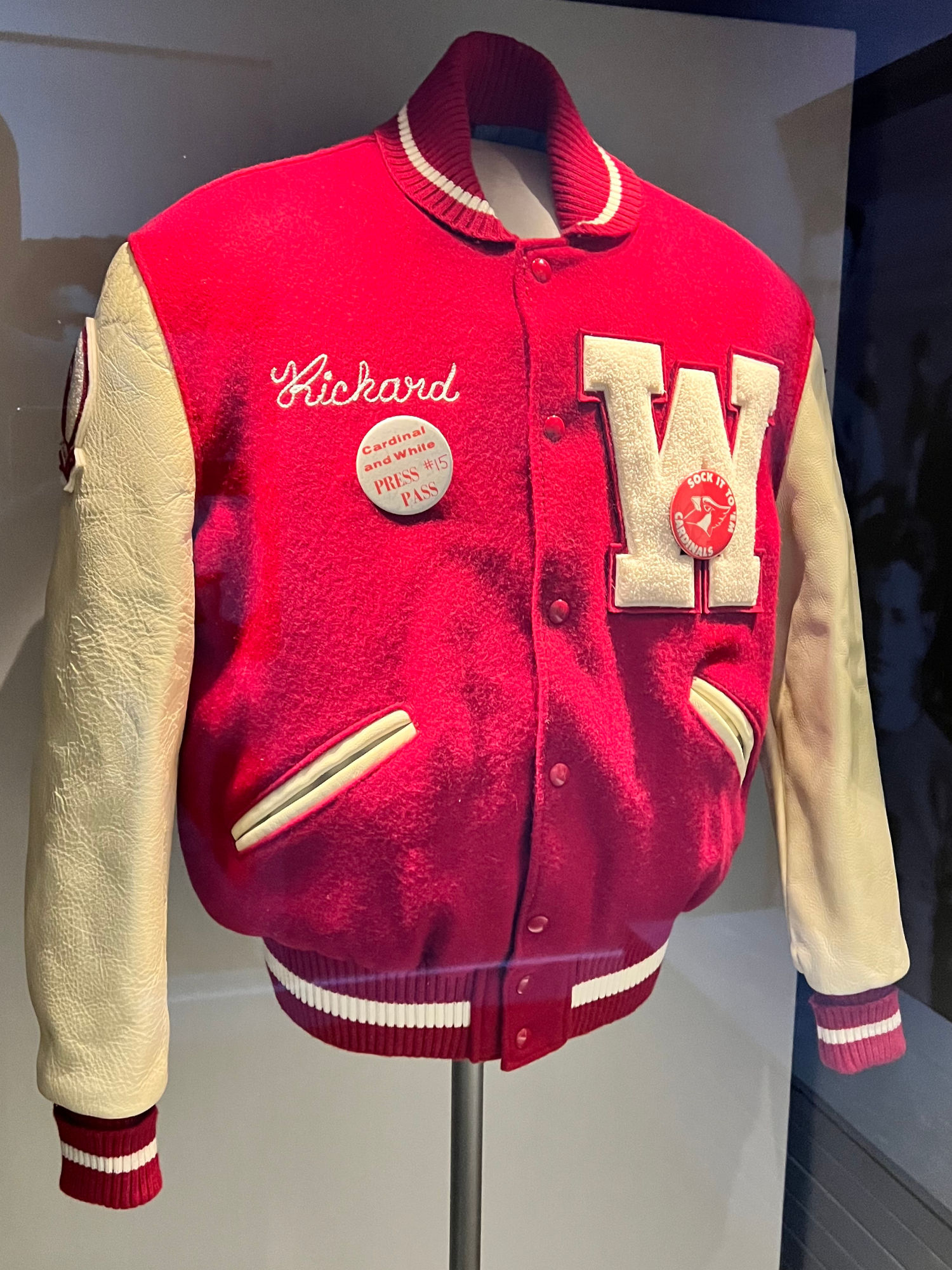
The jacket on display is from Whittier High School, a gift to President Nixon.
Nixon wrote that while at Whittier College, "the only times I got to play were in the last few minutes of the game that was already safely won or hopelessly lost," but he loved the game and the camaraderie of the team.
The jacket sports a "W" letter from Whittier College, given to President Nixon on his birthday by Whittier College football coach, "Chief" Wallace J. Newman in 1969.
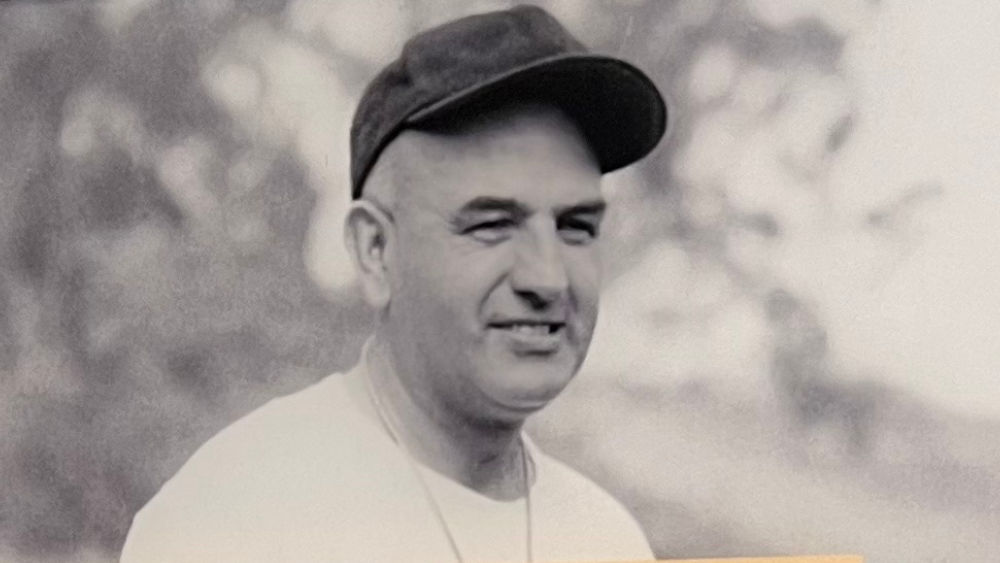
An inspiring figure with a proud Native American heritage, Chief Newman had a great influence on Richard Nixon's thinking. Nixon felt that discrimination against Native Americans had prevented Newman from reaching the heights he deserved. His influence can be seen in Nixon's sweeping and significant reforms of Native American policy as President.
Coach Wallace Newman - known as Chief - was a member of the La Jolla Band of Luiseno Indians. In 1923 he was a member of the first USC football team to play in the newly built Rose Bowl.
Despite his lack of size and prowess on the field, Nixon loved football - the physical challenge, the strategic aspects, the camaraderie of the team, but most of all the game itself. Undaunted by failure, the undersized substitute tackle picked himself up again and again when his teammates bowled him over during practice. Newman nurtured Nixon's competitive drive and instilled in him a lesson he never forgot: Never Give Up.
He used to say ... When you lose, get mad - but get mad at yourself, not at your opponent. - Richard Nixon Memoirs
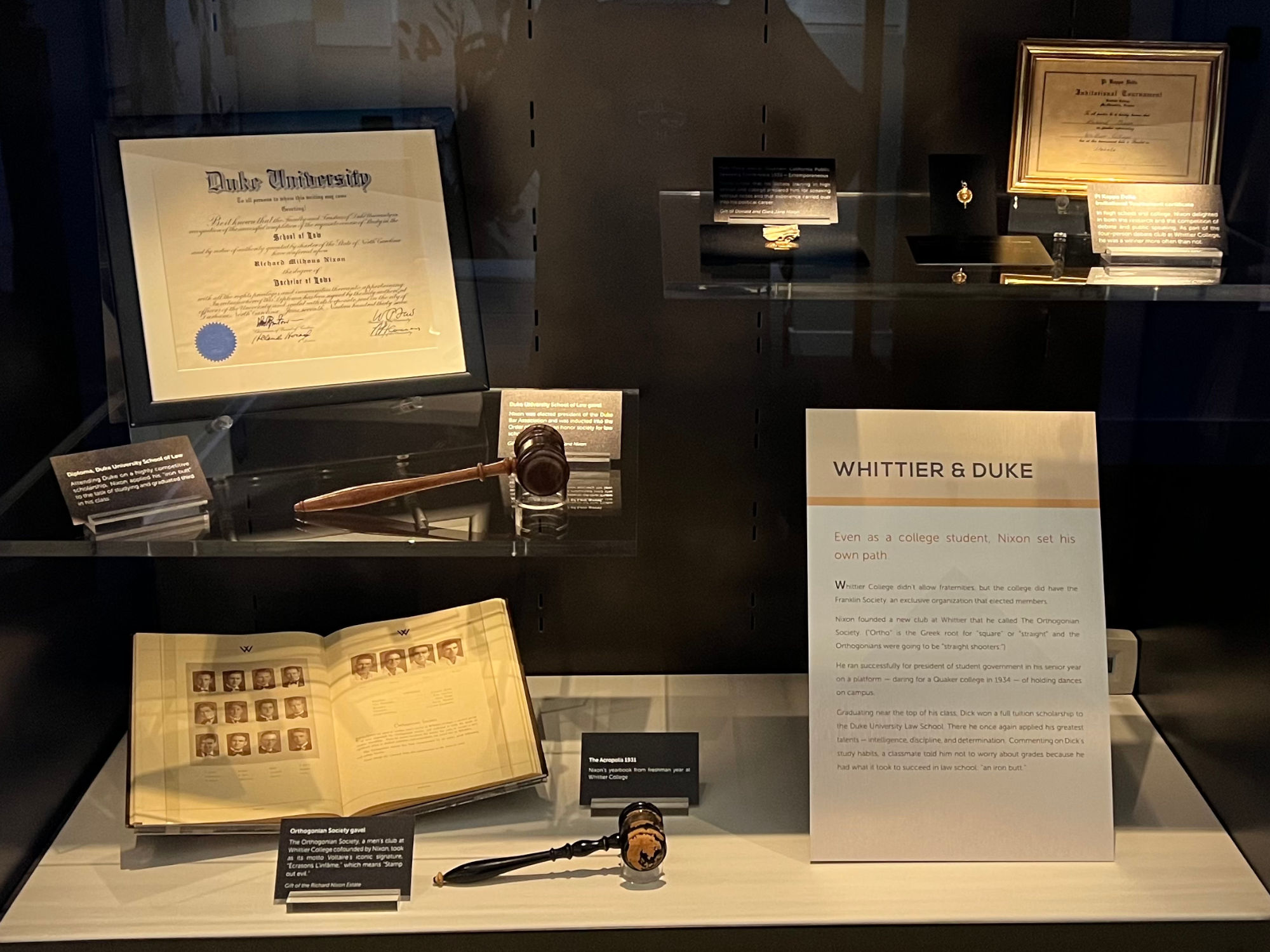
Even as a college student, Nixon set his own path.
Whittier College didn't allow fraternities, but the college did have the Franklin Society, an exclusive organization that elected members.
Nixon founded a new club at Whittier that he called The Orthogonian Society. ("Ortho" is the Greek root for "square" or "straight" and the Orthogonians were going to be "straight shooters.")
He ran successfully for president of student government in his senior year on a platform - daring for a Quaker college in 1934 - of holding dances on campus.
Graduating near the top of his class, Dick won a full tuition scholarship to the Duke University Law School. There he once again applied his greatest talents - intelligence, discipline, and determination. Commenting on Dick's study habits, a classmate told him not to worry about grades because he had what it took to succeed in law school: "an iron butt."
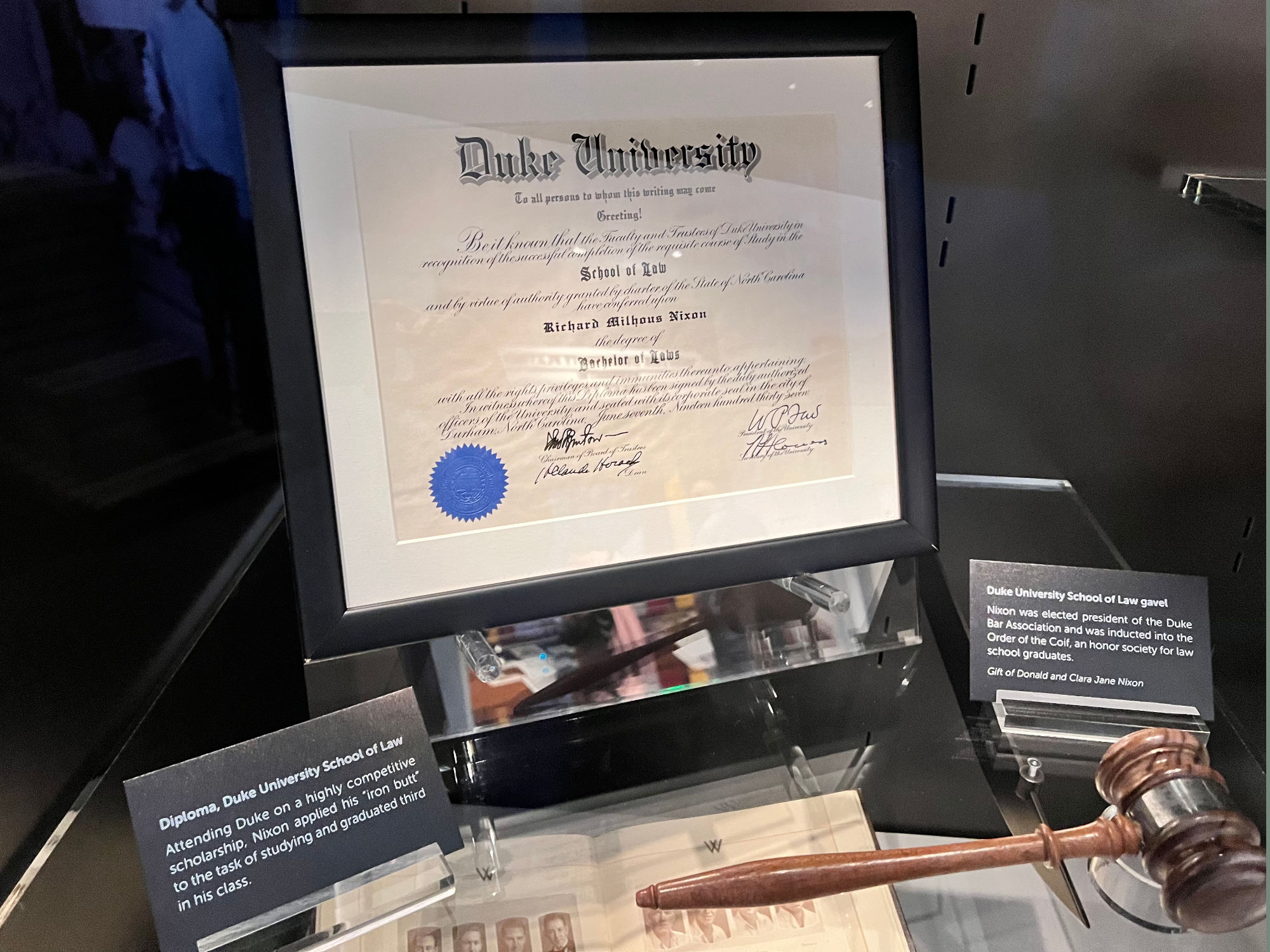
- Diploma, Duke University School of Law
Attending Duke on a highly competitive scholarship, Nixon applied his "iron butt" to the task of studying and graduated third in his class. - Duke University School of Law gavel
Nixon was elected president of the Duke Bar Association and was inducted into the Order of the Colf, an honor society for law school graduates. Gift of Donald and Clara Jane Nixon
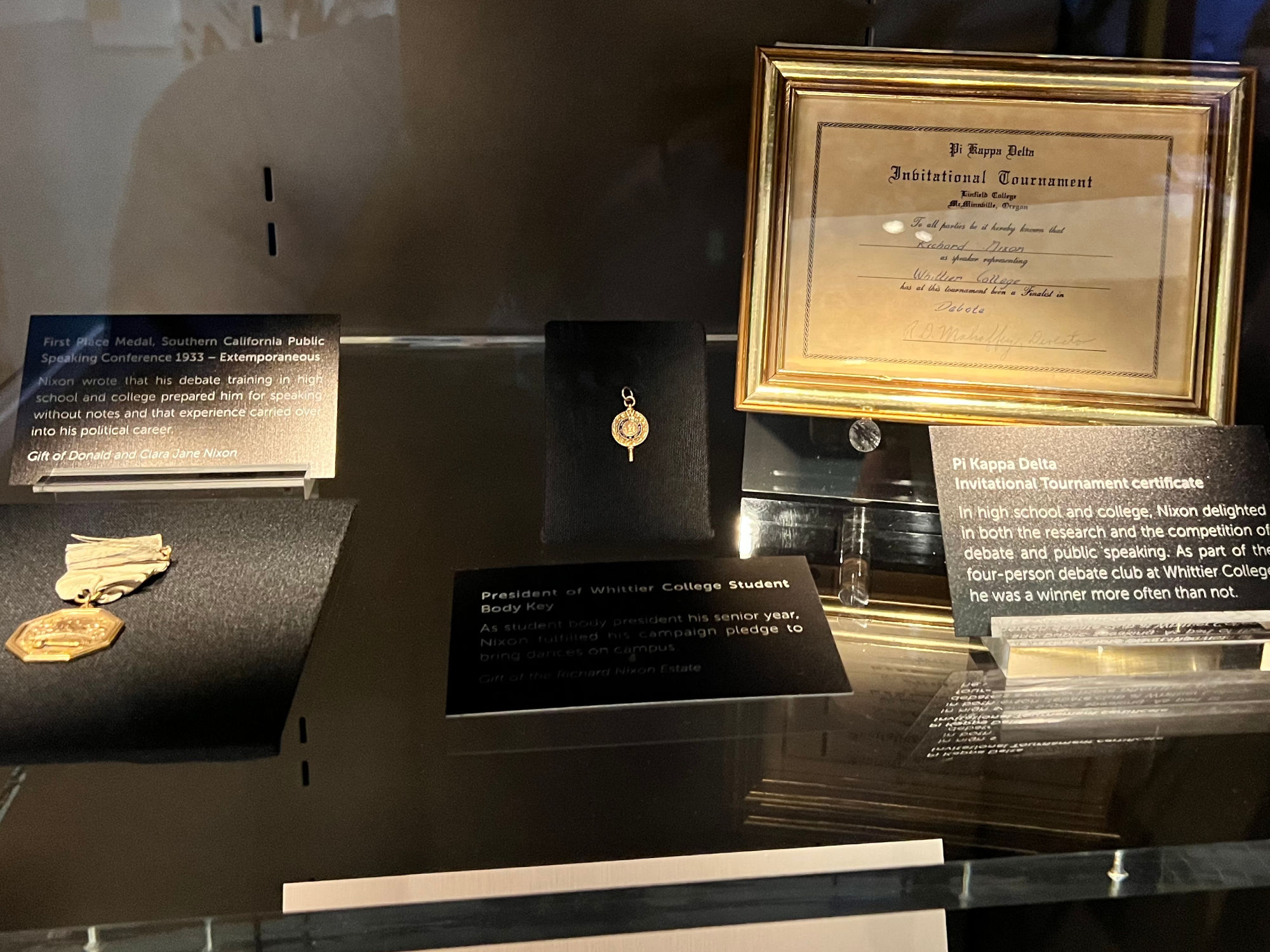
- First Place Medal, Southern California Public Speaking Conference 1933 - Extemporaneous
Nixon wrote that his debate training in high school and college prepared him for speaking without notes and that experience carried over into his political career. - President of Whittier College Student Body Key
As student body president his senior year, Nixon fulfilled his campaign pledge to bring dances on campus. - Phi Kappa Delta Invitational Tournament Certificate
In high school and college, Nixon delighted in both the research and the competition of debate and public speaking. As part of the four-person debate club at Whittier College, he was a winner more often than not.
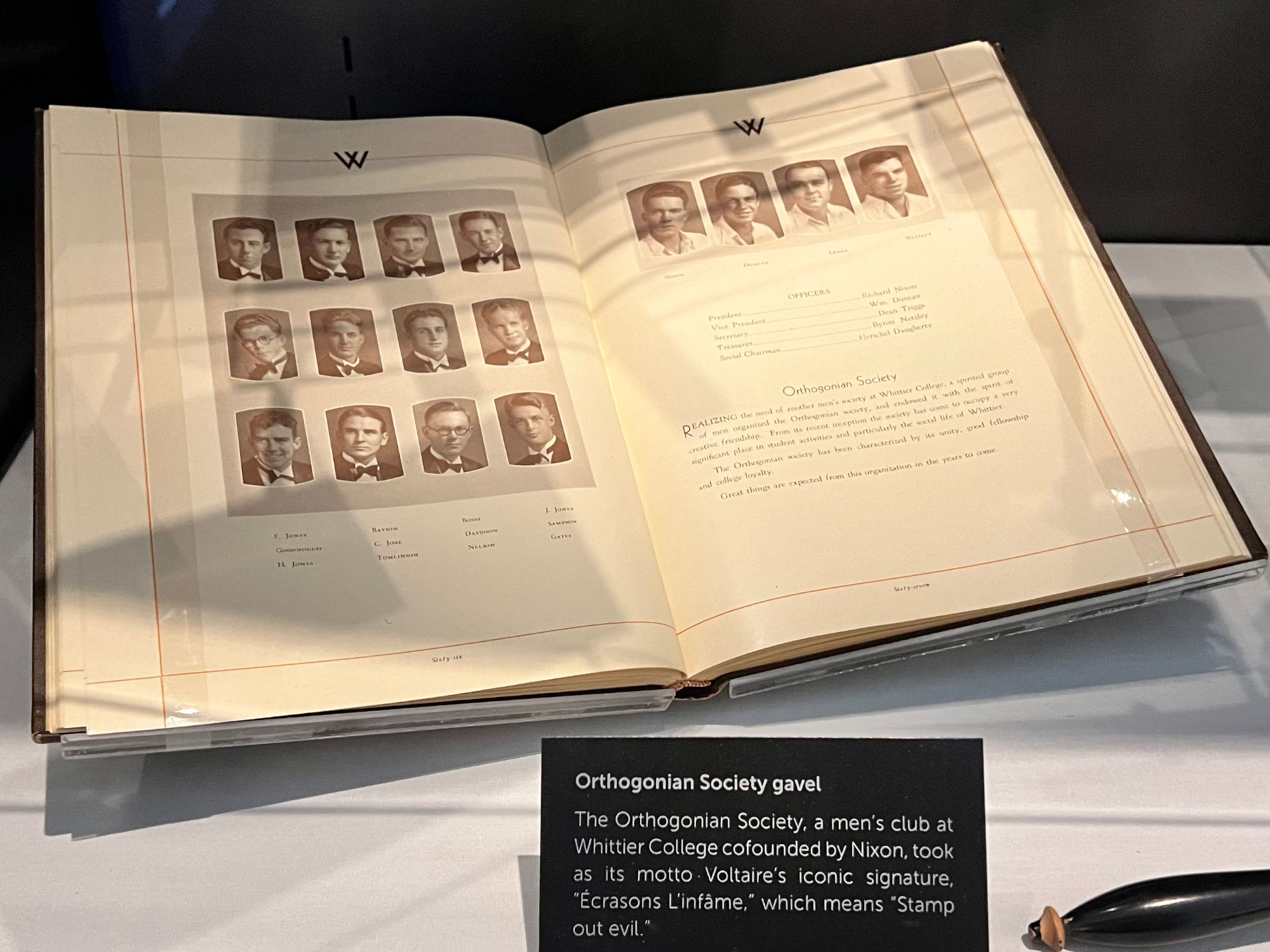
Nixon's yearbook from freshman year at Whittier College
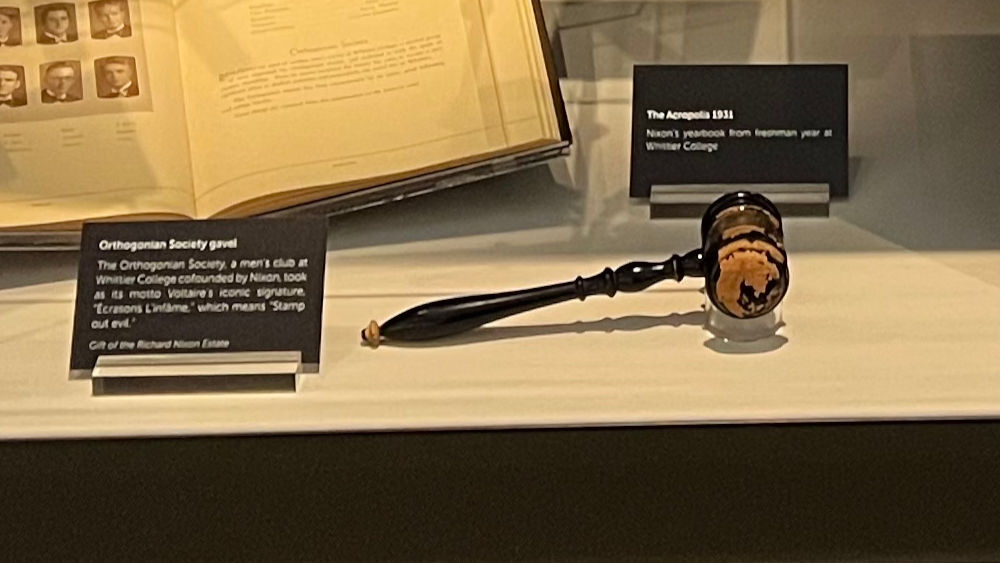
The Orthogonian Society, a men's club at Whittier College cofounded by Nixon, took as its motto Voltaire's iconic signature, "Ecrasons L'infame," which means "Stamp out evil."
Graduating third in his class from Duke Law, Nixon was ready to take on the world but not quite sure where to start.
He visited New York to test the waters with the big law firms. He applied to the FBI and made a good impression at the interview. But in 1937 jobs were still scarce and he received no offers.
He decided to return home and take the California bar exam, a path that would open a broad avenue of possibilities. He was quickly hired by one of Whittier's notable law firms and settled in to begin his career.
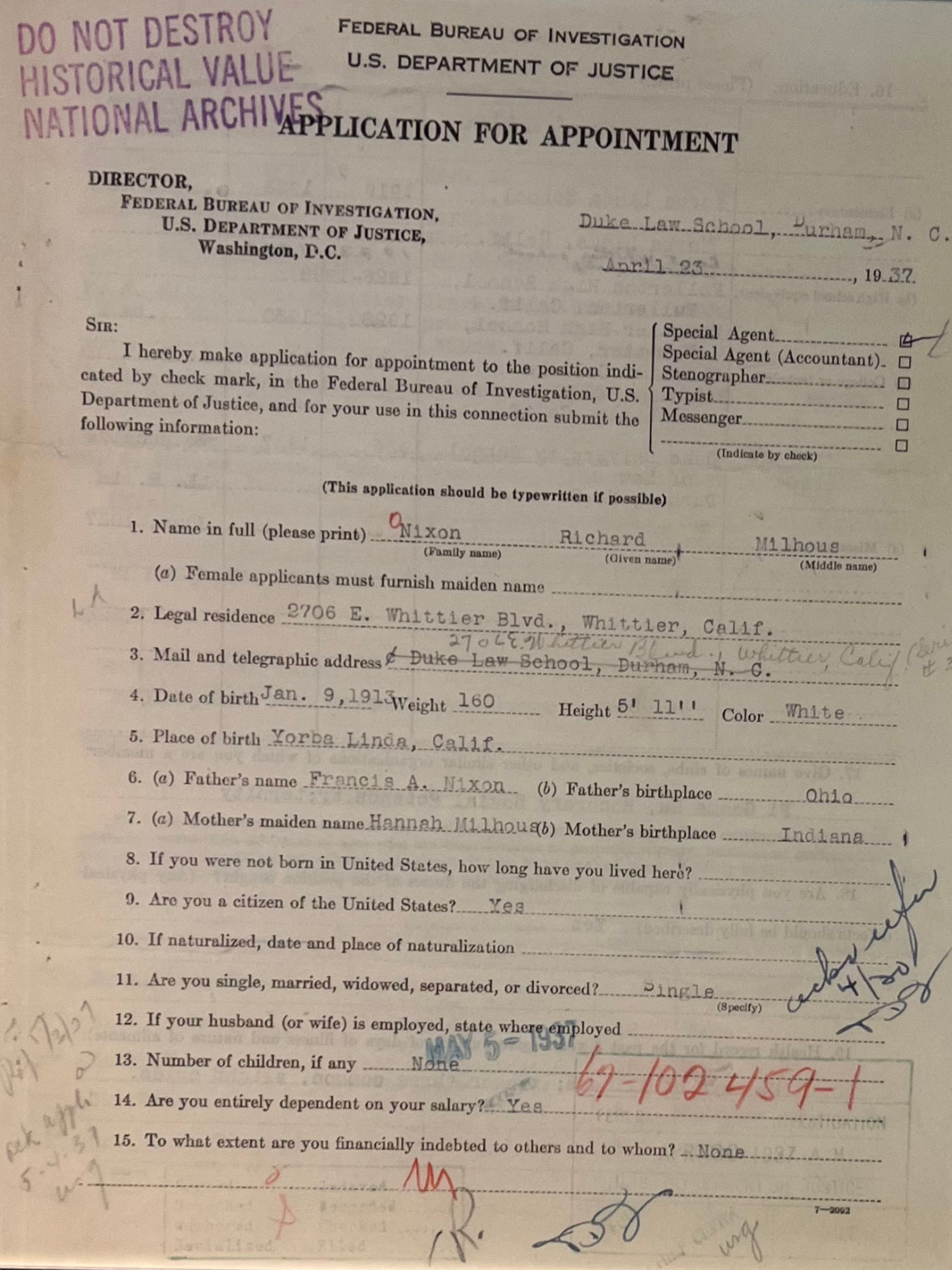
- FBI Application
- From Richard Nixon's FBI Interview file August 1937
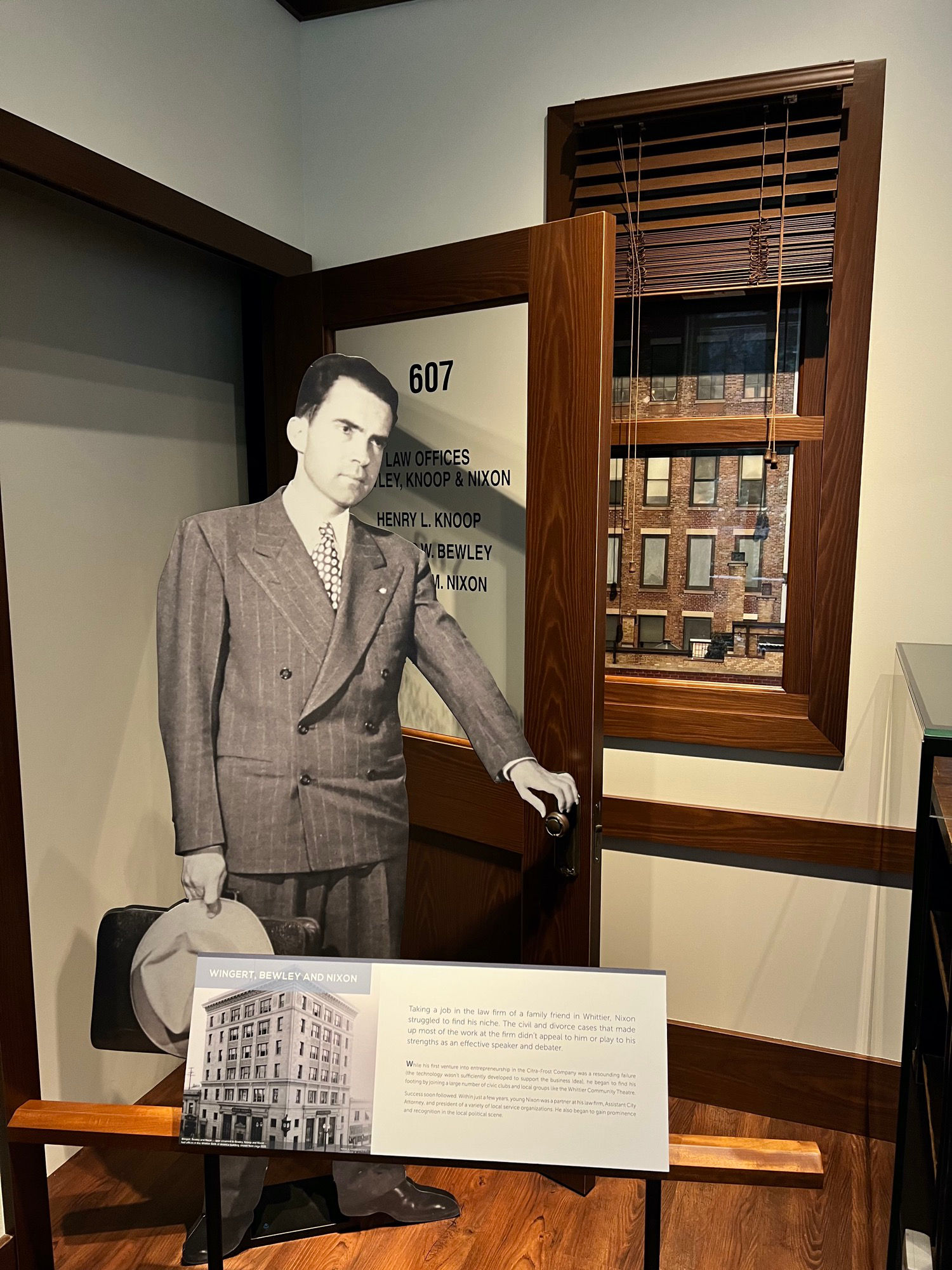
Taking a job in the law firm of a family friend in Whittier, Nixon struggled to find his niche. The civil and divorce cases that made up most of the work at the firm didn't appeal to him or play to his strengths as an effective speaker and debater.
While his first venture into entrepreneurship in the Citra-Frost Company was a resounding failure (the technology wasn't sufficiently developed to support the business idea), he began to find his footing by joining a large number of civic clubs and local groups like the Whittier Community Theatre.
Success soon followed. Within just a few years, young Nixon was a partner at his law firm, Assistant City Attorney, and president of a variety of local service organizations. He also began to gain prominence and recognition in the local political scene.
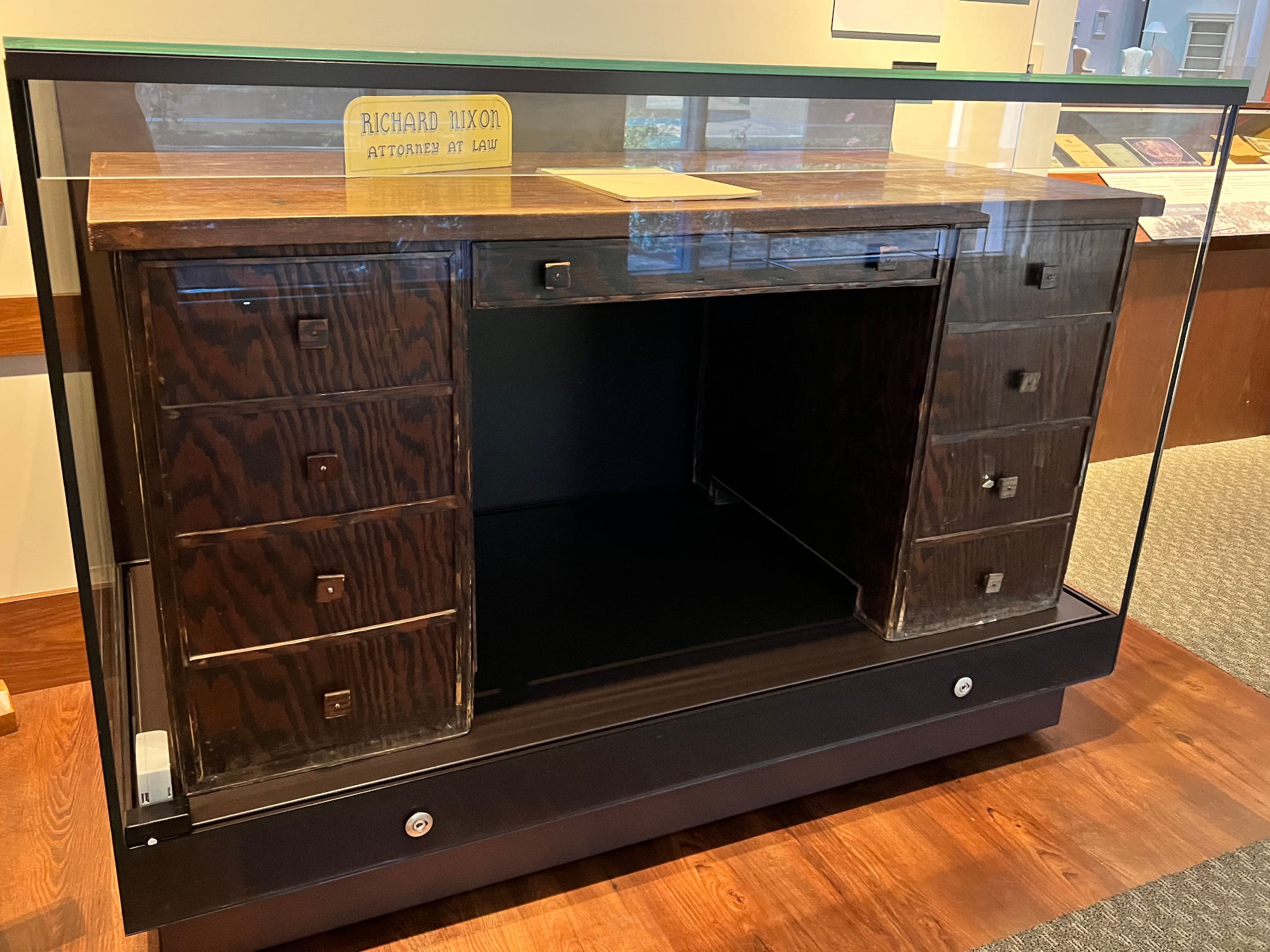
The young couple moved to Washington, DC, where Dick had a job waiting for him at the Office of Price Administration.
The job gave him a firsthand understanding of the slowly grinding gears of the Government, and what he considered to be the elitist attitudes of many bureaucrats. This formative experience with Federal bureaucracy would significantly shape his approach to domestic policy when he became President.
Although he was entitled to military deferrals both as a birthright Quaker and as a government worker, Nixon was increasingly unhappy staying on the sidelines as he watched others joining up to fight for their country.
It was a difficult decision for me to make, but I felt that I could not sit back while my country was being attacked ... In the face of Hitler and Tojo, Quaker pacifism not only failed to stop violence - it actually played into the hands of a barbarous foe.
His family, especially his parents, were opposed. But Nixon was determined to go where the action was. He enlisted in the Navy and was commissioned as an officer in 1942. He eventually shipped out for service on several islands in the South Pacific.
Lieutenant Nixon thrived in the military environment. He honed a variety of skills from poker to negotiating, and encountered men and women from diverse backgrounds from all across America.
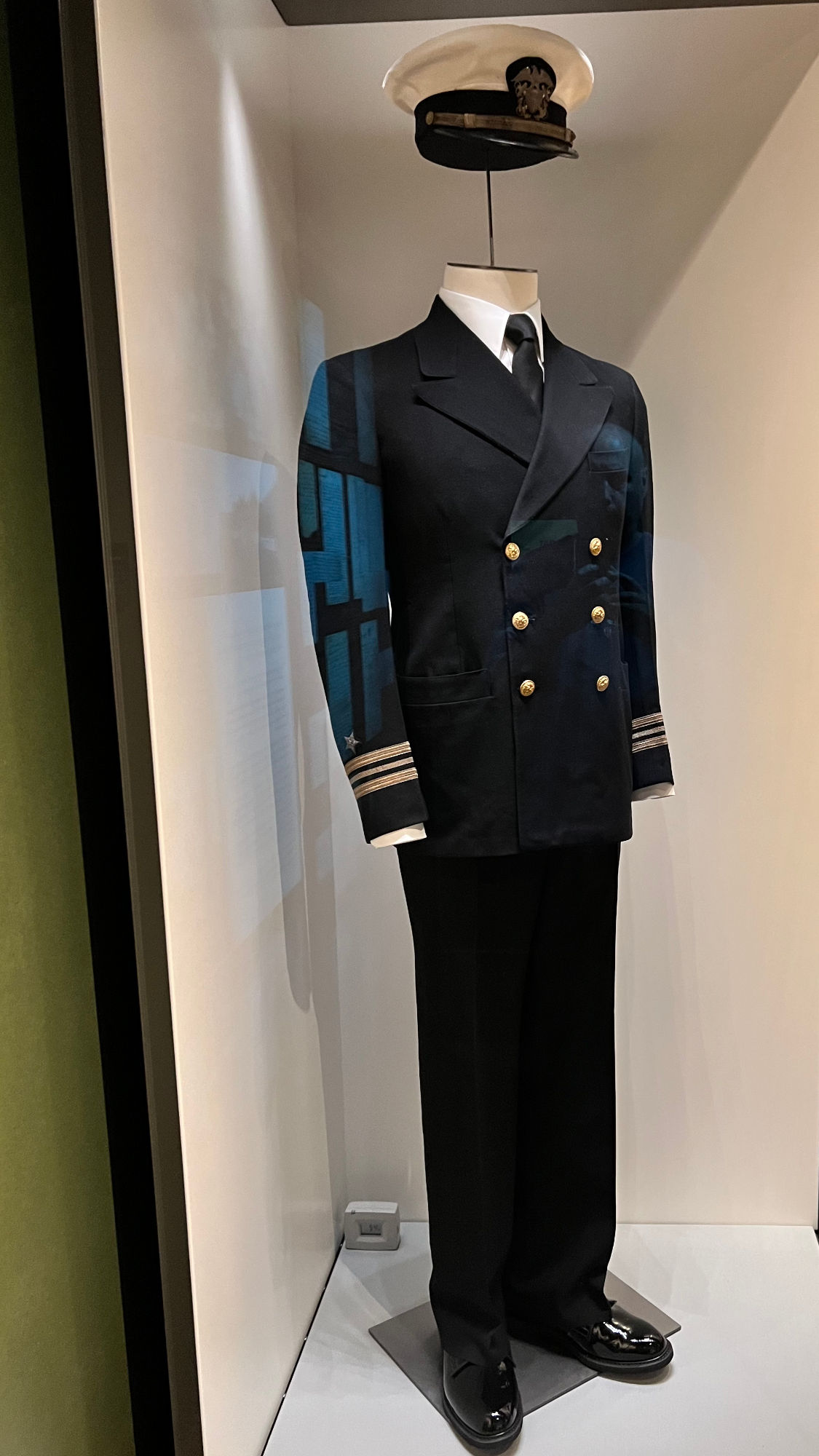
Lieutenant Nixon served from June 1942 until he resigned his commission at the start of 1946. He received a Navy Letter of Commendation for his service in the South Pacific Combat Air Transport Command.
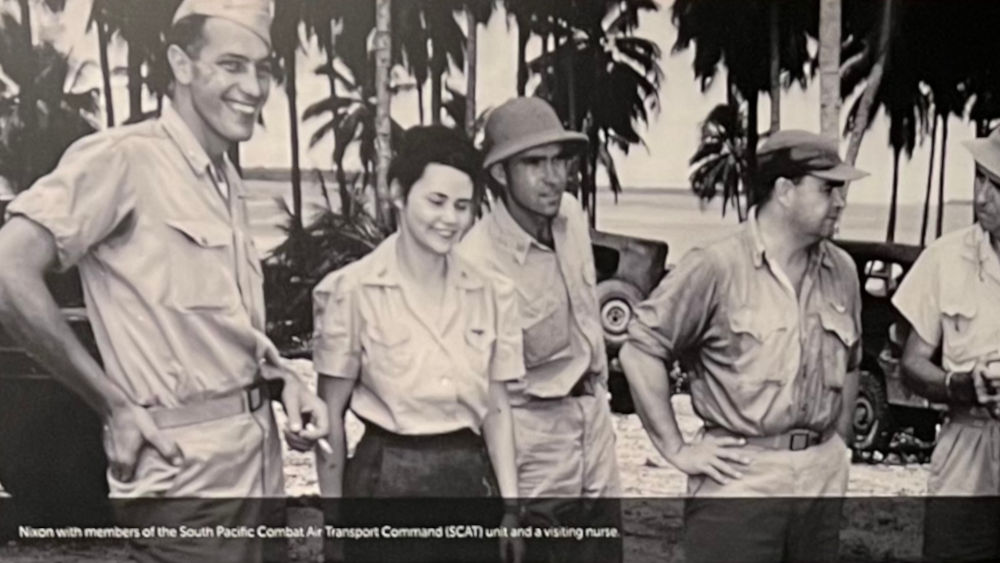
Nixon with members of the South Pacific Combat Air Transport Command unit and a visiting nurse
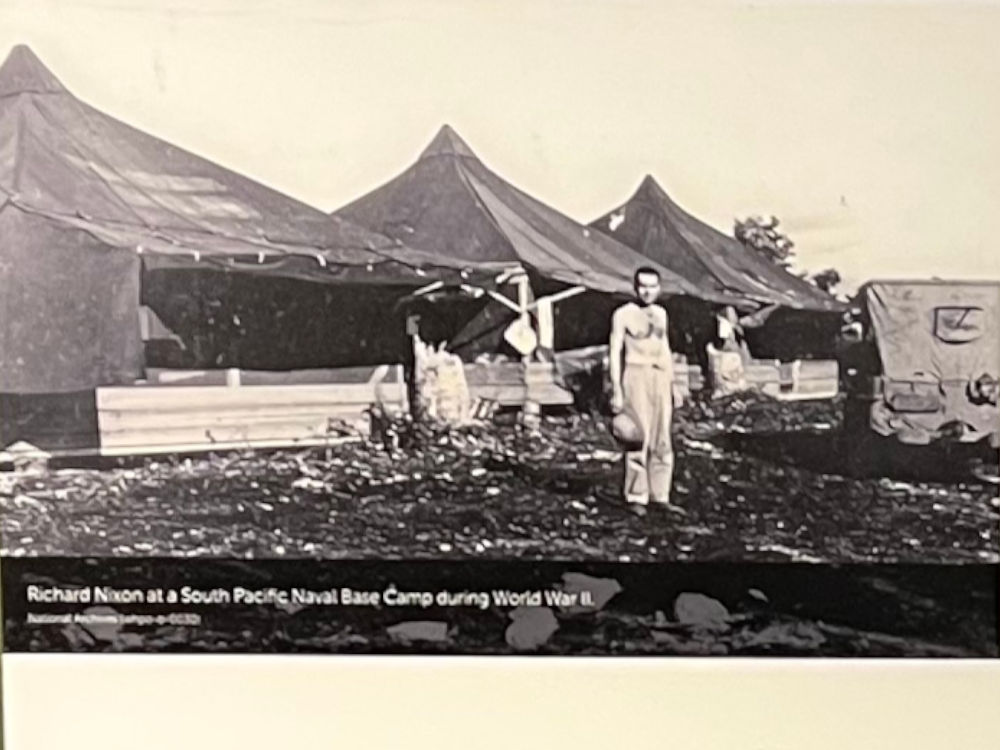
Richard Nixon at a South Pacific Naval Base Camp during World War II
During his service in the South Pacific, Nixon was stationed on several of the Soloman Islands, including New Caledonia, Bougainville, and Green Island
It was just simply an innate feeling ... that it was vitally important to be where the action was
-1983
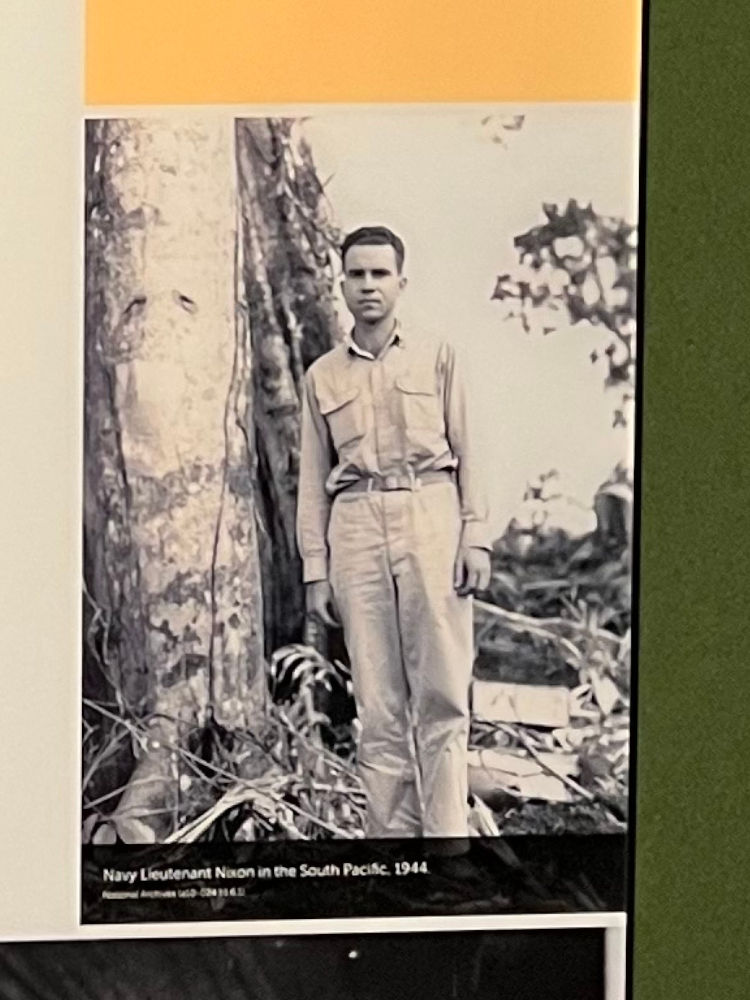
Navy Lieutenant Nixon in the South Pacific.
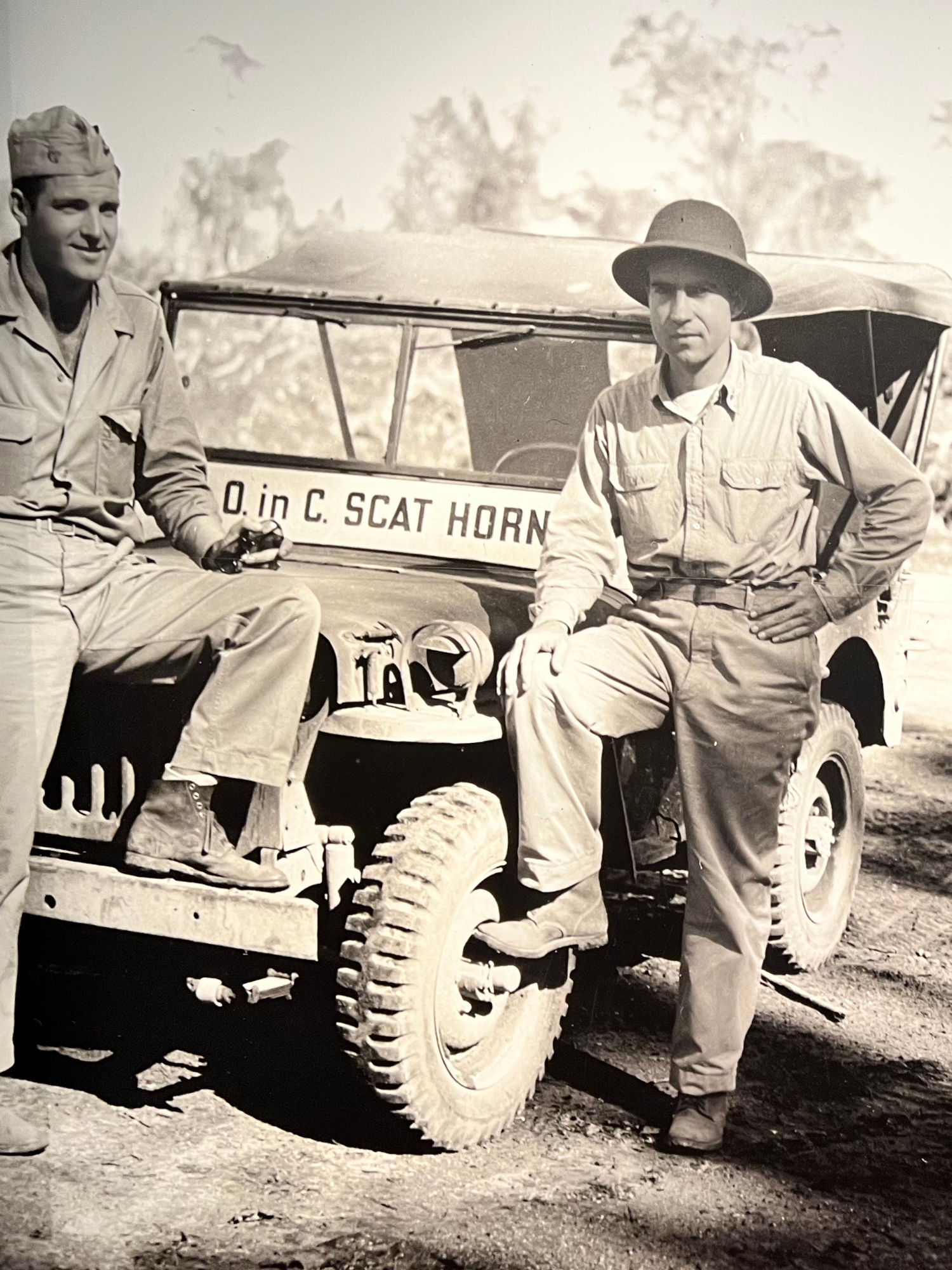
Richard Nixon and a fellow serviceman stand with a South Pacific Combat Air Transport Command (SCAT) military jeep.
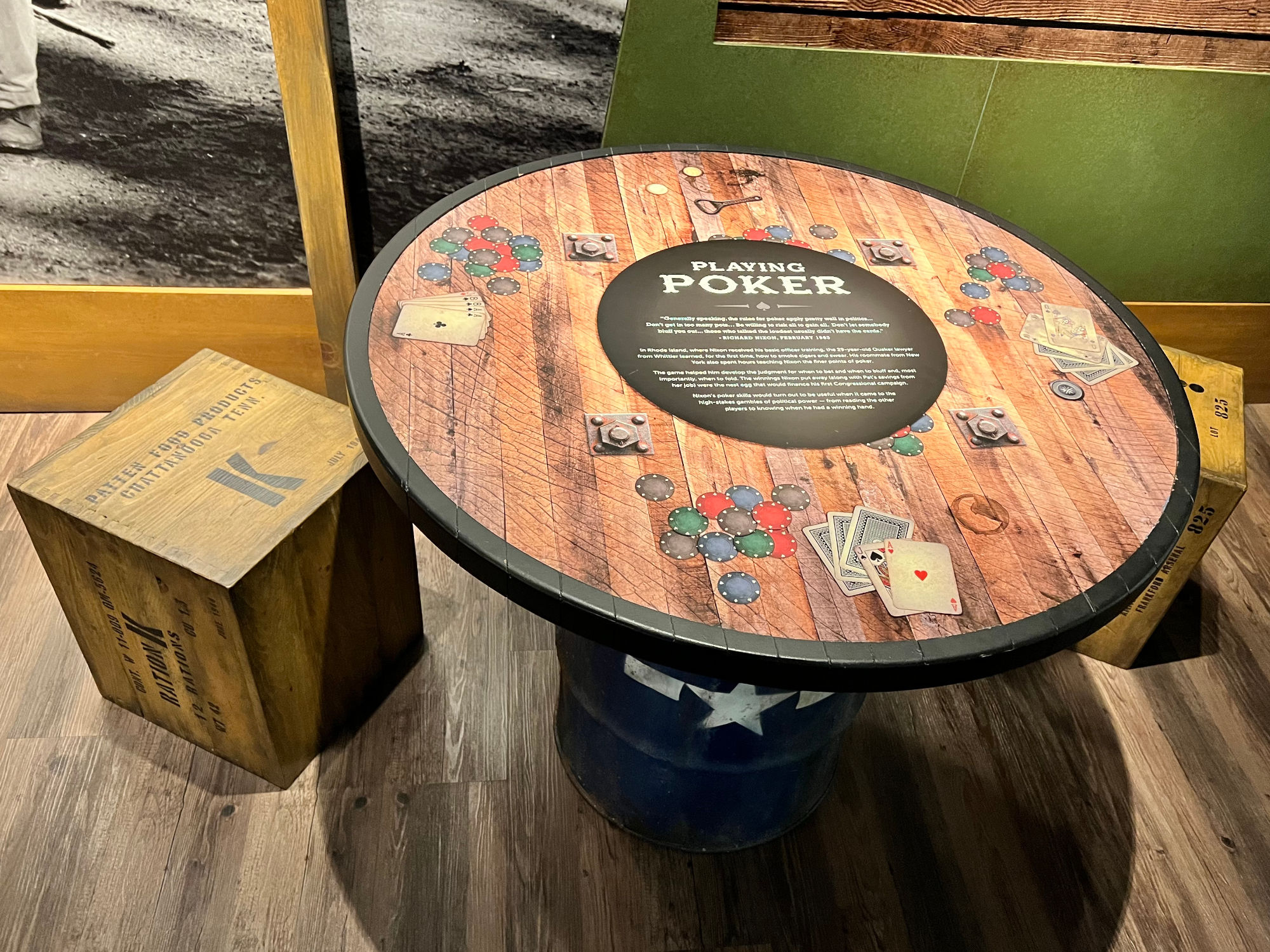
In Rhode Island, where Nixon received his basic officer training, the 29 year-old Quaker lawyer from Whittier learned, for the first time, how to smoke cigars and swear. His roommate from New York also spent hours teaching Nixon the finer points of poker.
The game helped him develop the judgement for when to bet and when to bluff and, most importantly, when to fold. The winnings Nixon put away (along with Pat's savings from her job) were the nest egg that would finance his first Congressional campaign.
Nixon's poker skills would turn out to be useful when it came to the high-stakes gamble of political power - from reading the other players to knowing when he had a winning hand.
Generally speaking, the rules for poker apply pretty well in politics... Don't get in too many pots... Be willing to risk all to gain all. Don't let somebody bluff you out... those who talked the loudest usually didn't have the cards. - February 1983
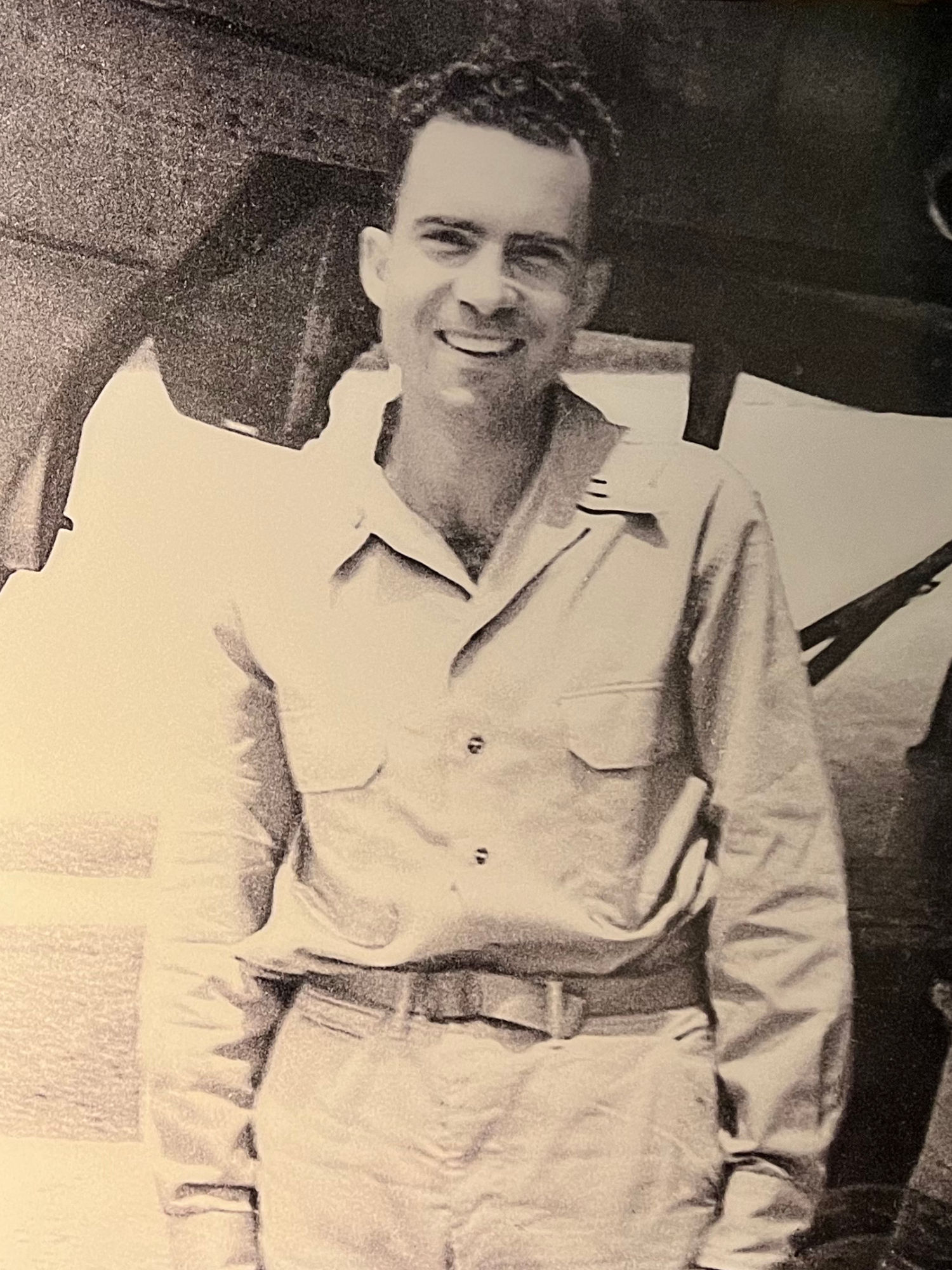
Lieutenant Nixon used his few hours of down time to offer a brief break and a reminder of home to the tired and stressed flight crews flying on their way to and from the front.
He called himself a "first-rate scrounger" and would swap or trade anything he could to get fresh New Zealand beef to make his burgers memorable.
Long after the war, without knowing what had become of "Nick," many pilots and crews fondly remembered the hamburgers, beer, and cold fresh pineapple juice they had a Nick's Snack Shack
